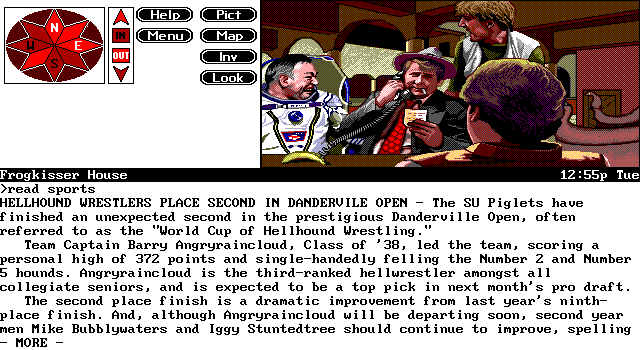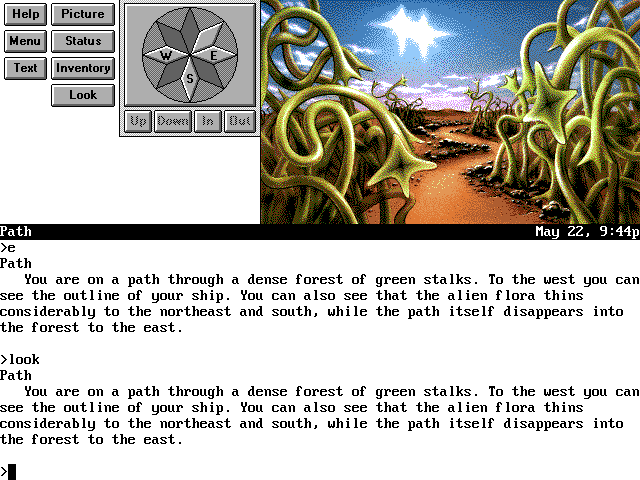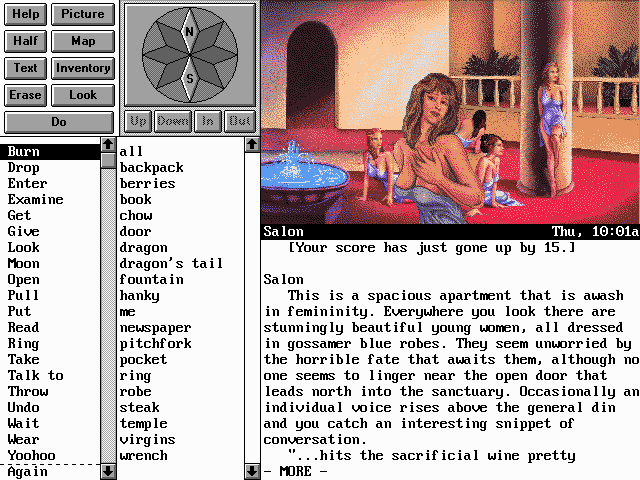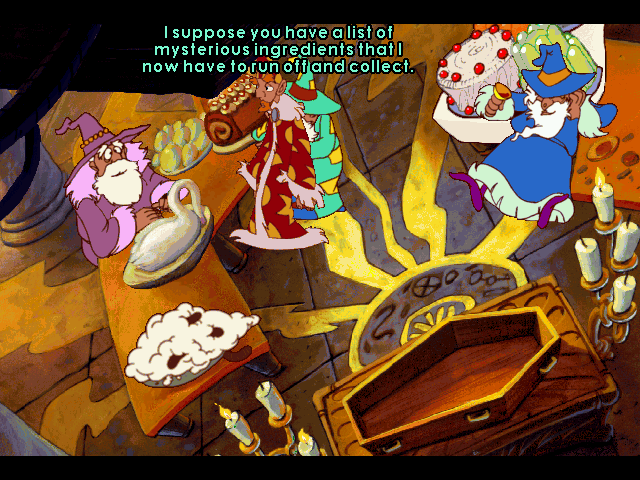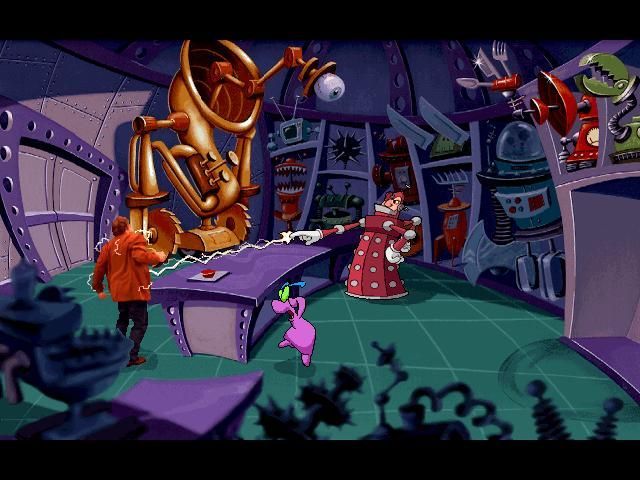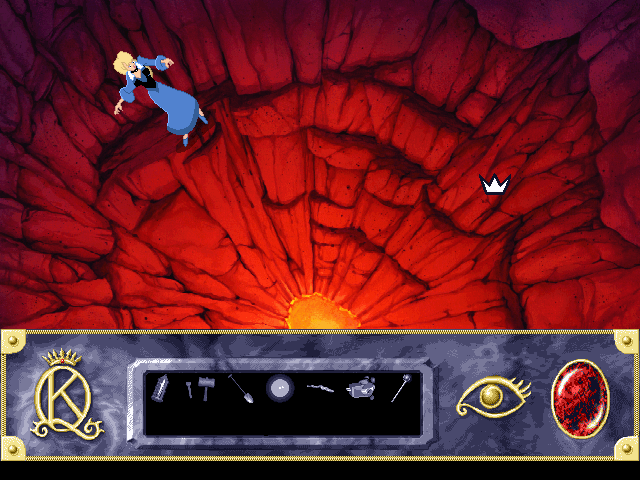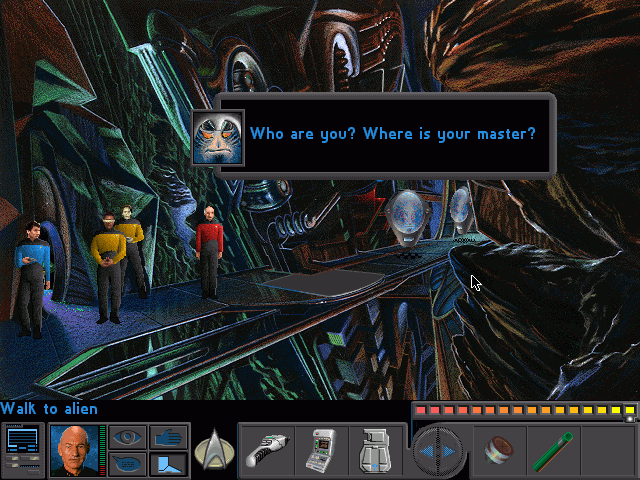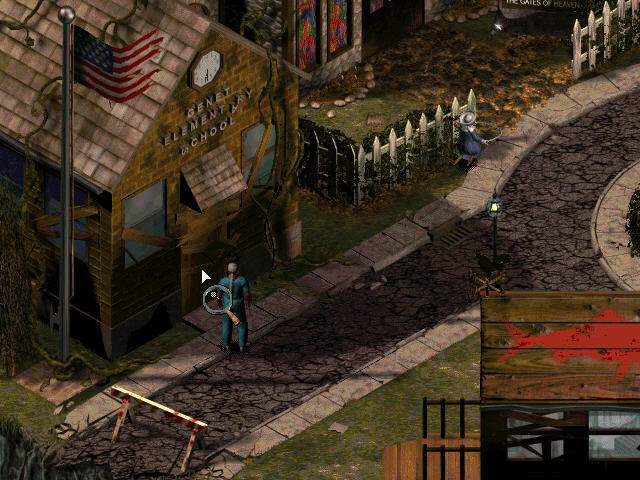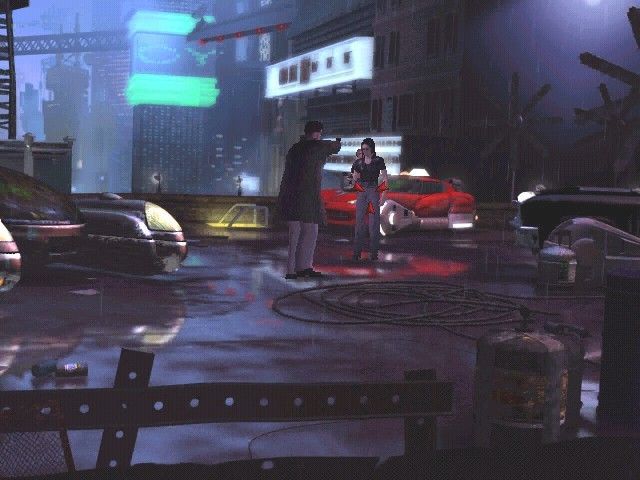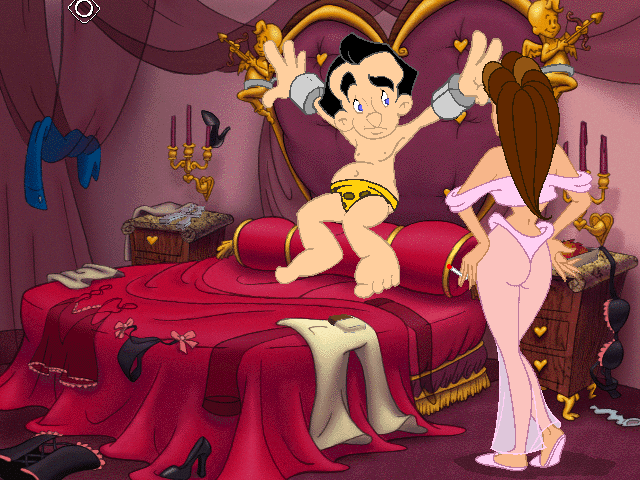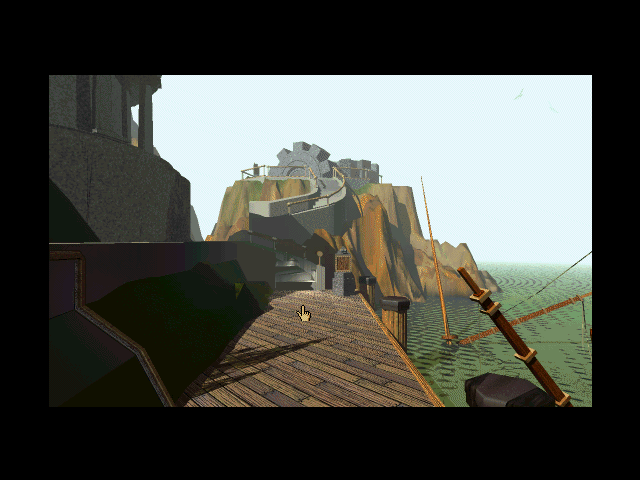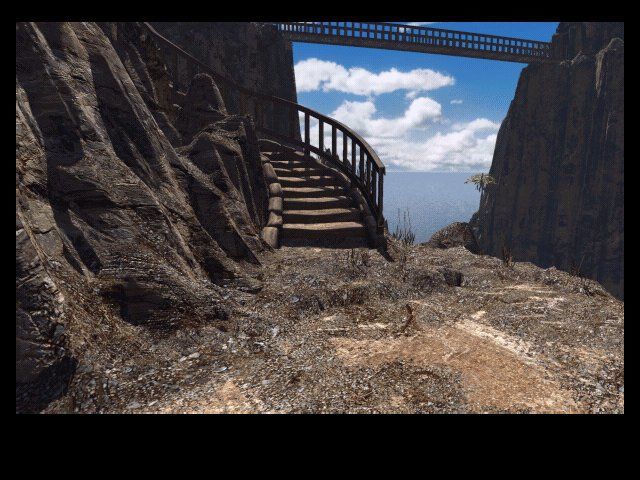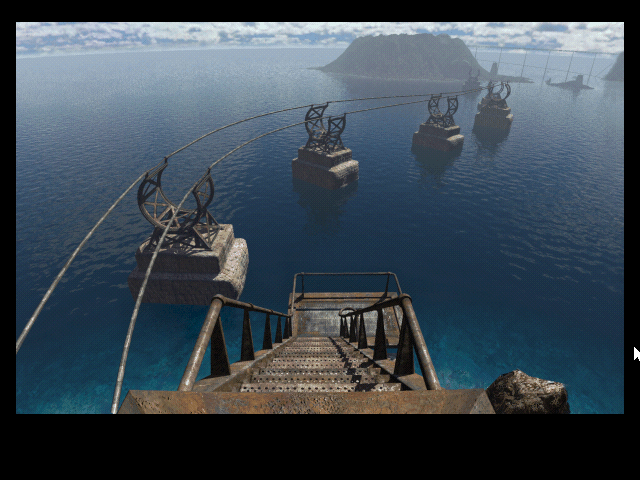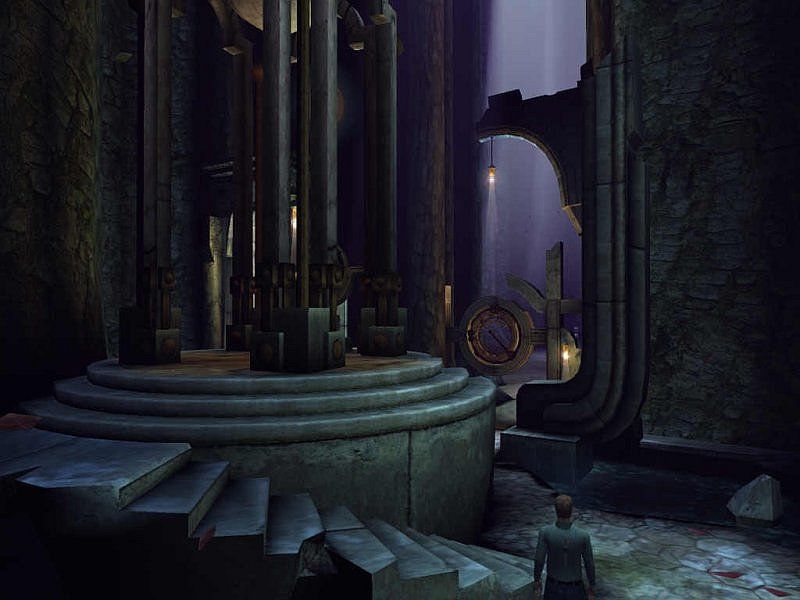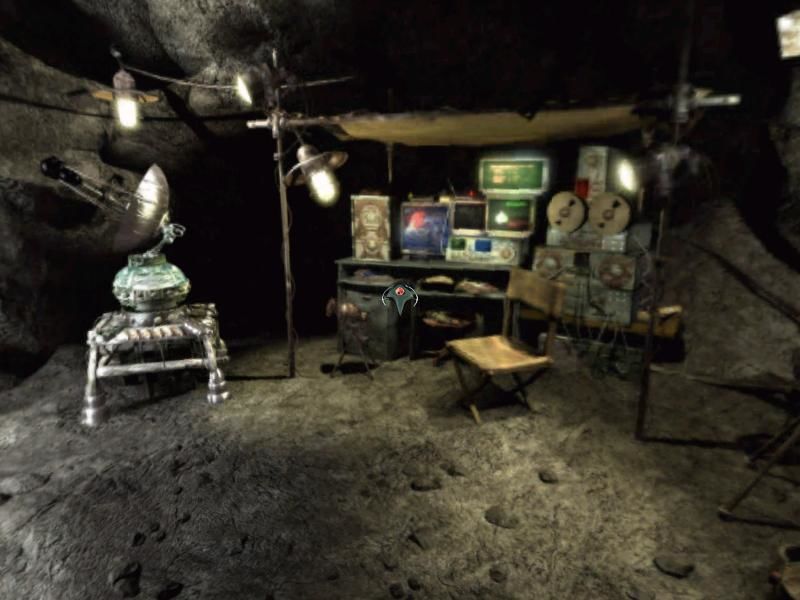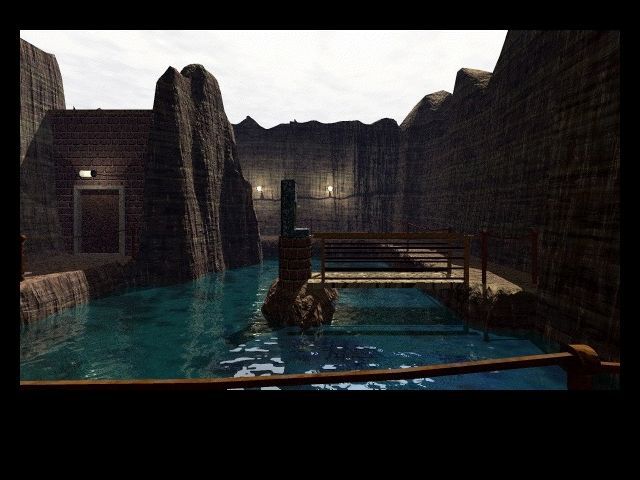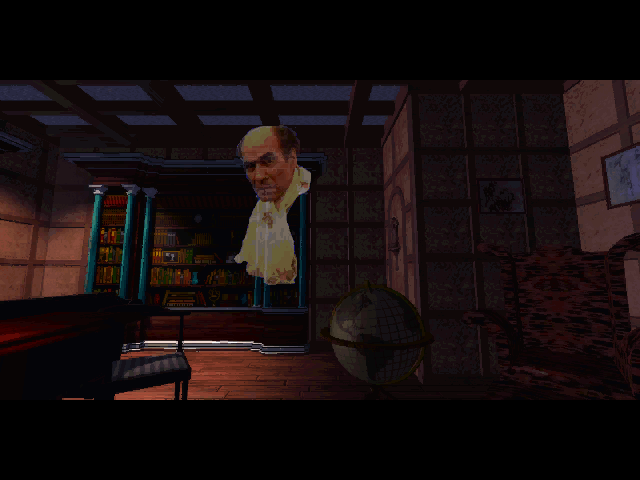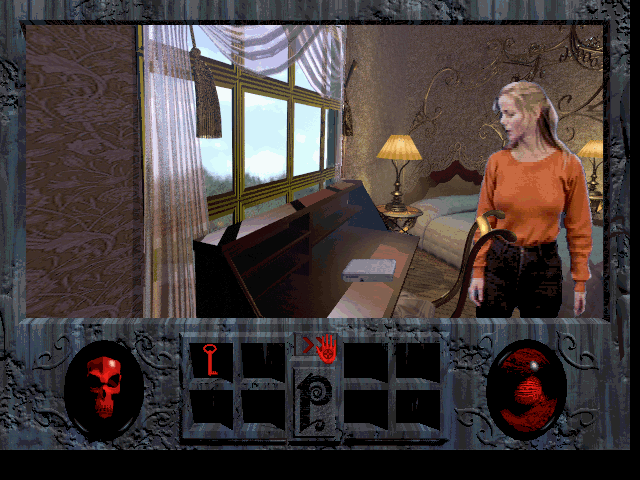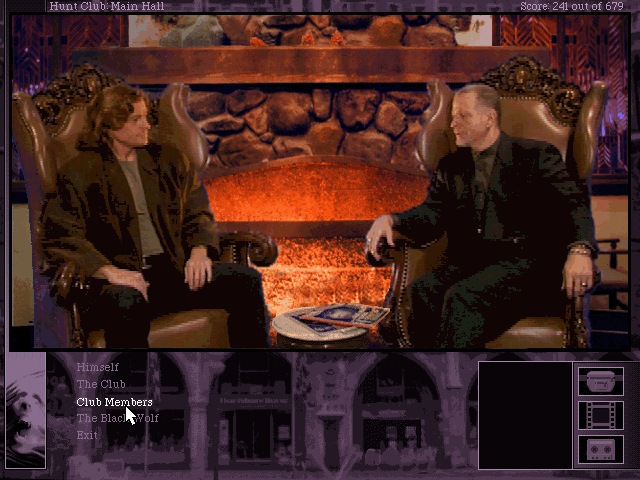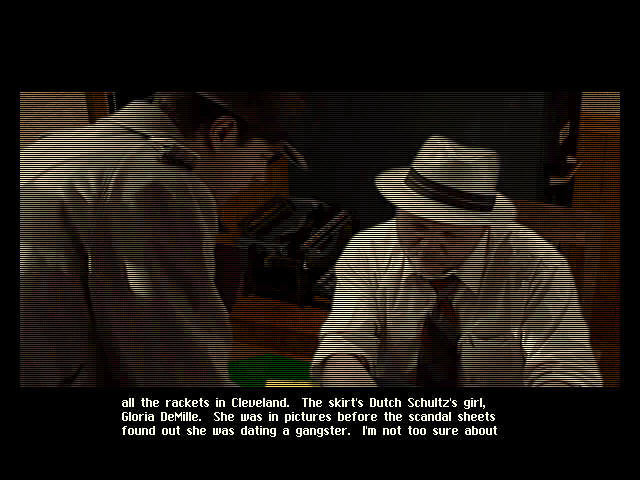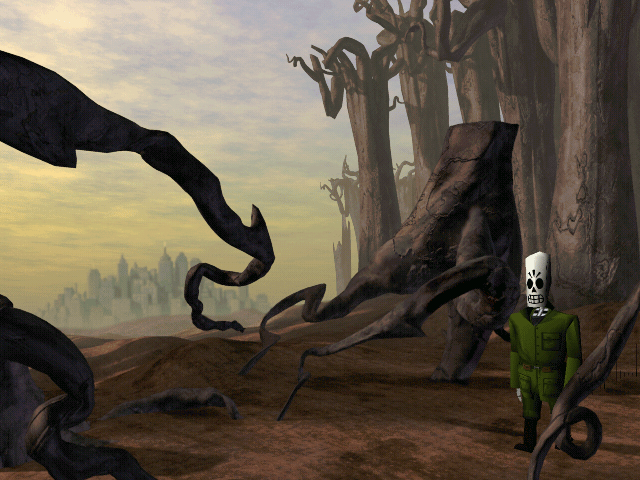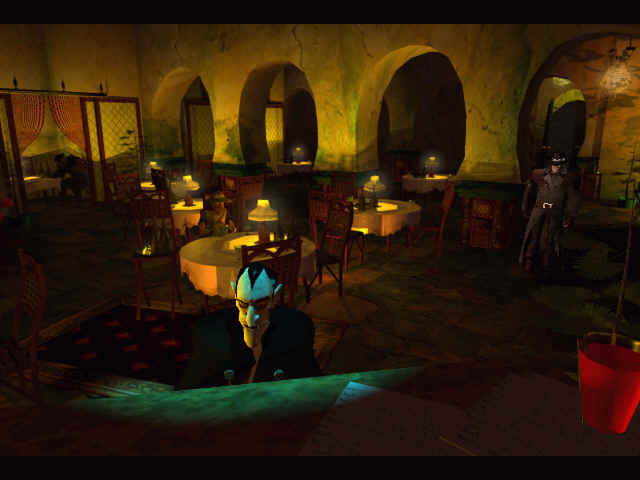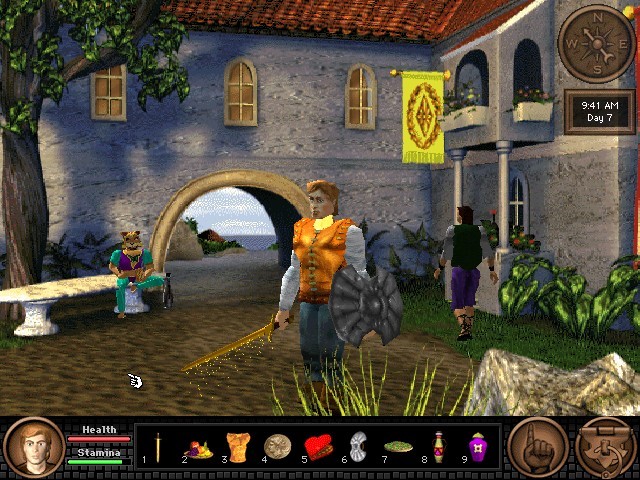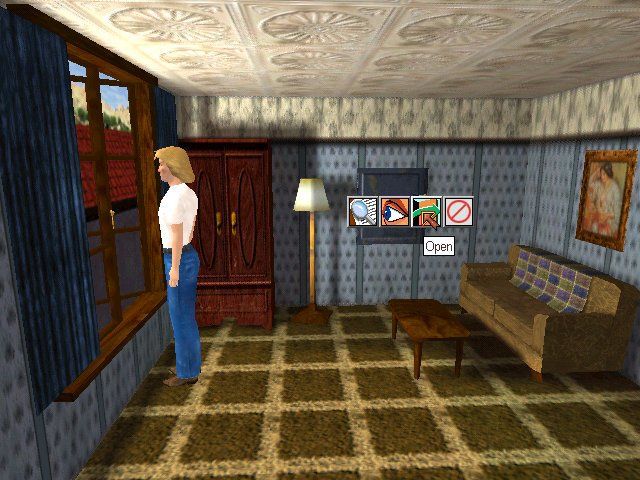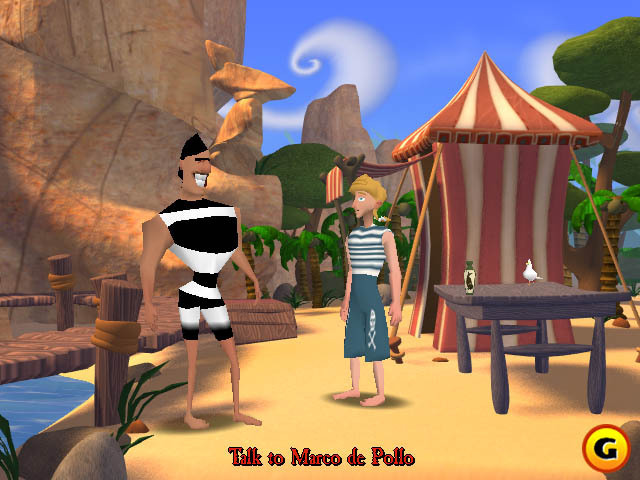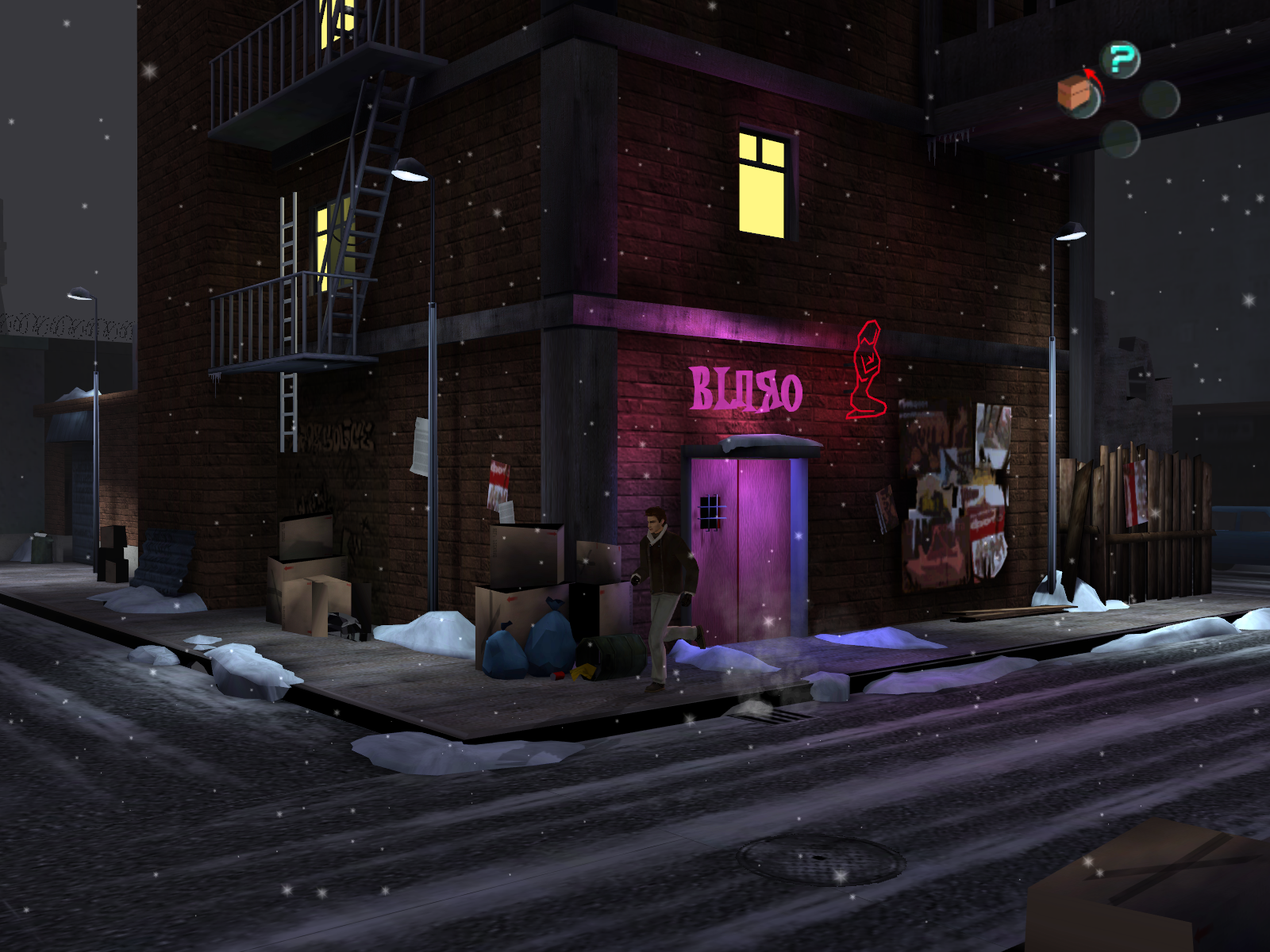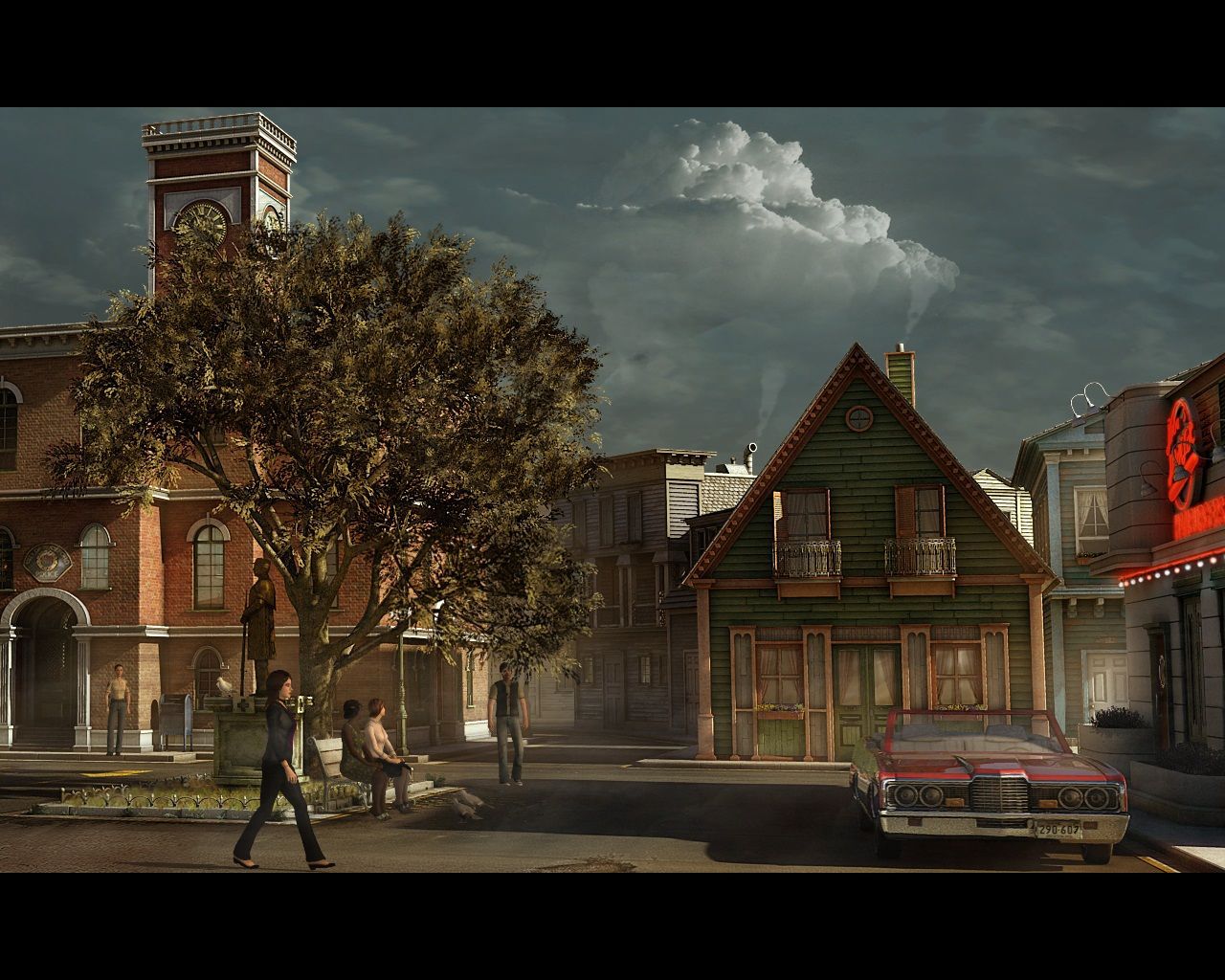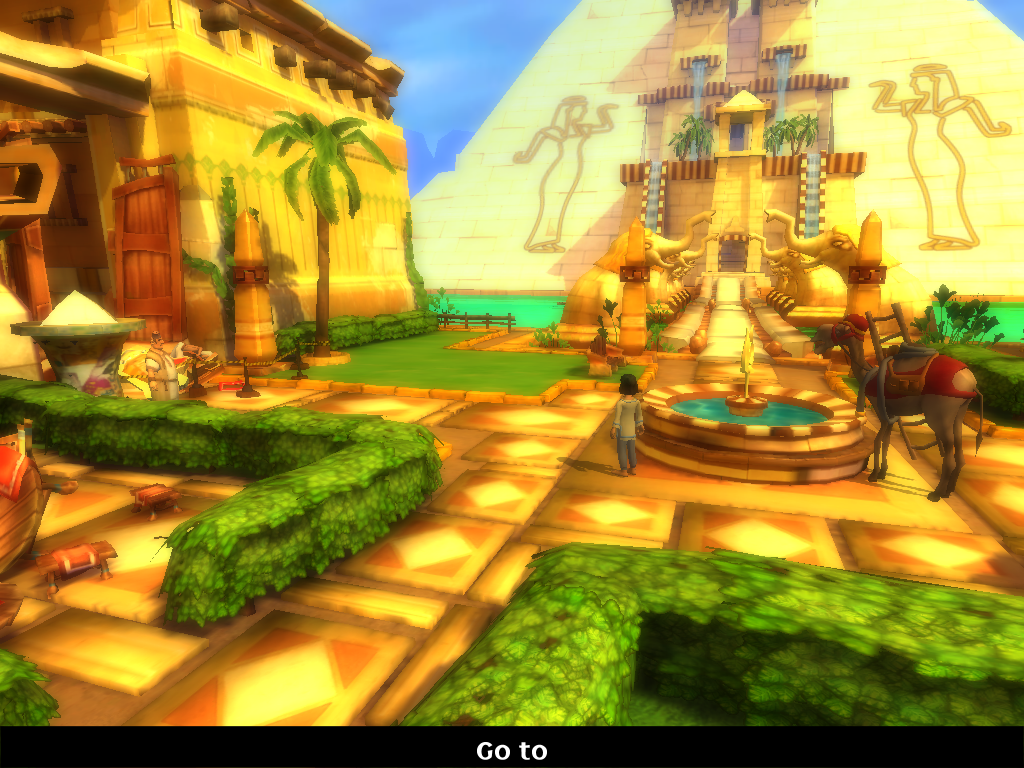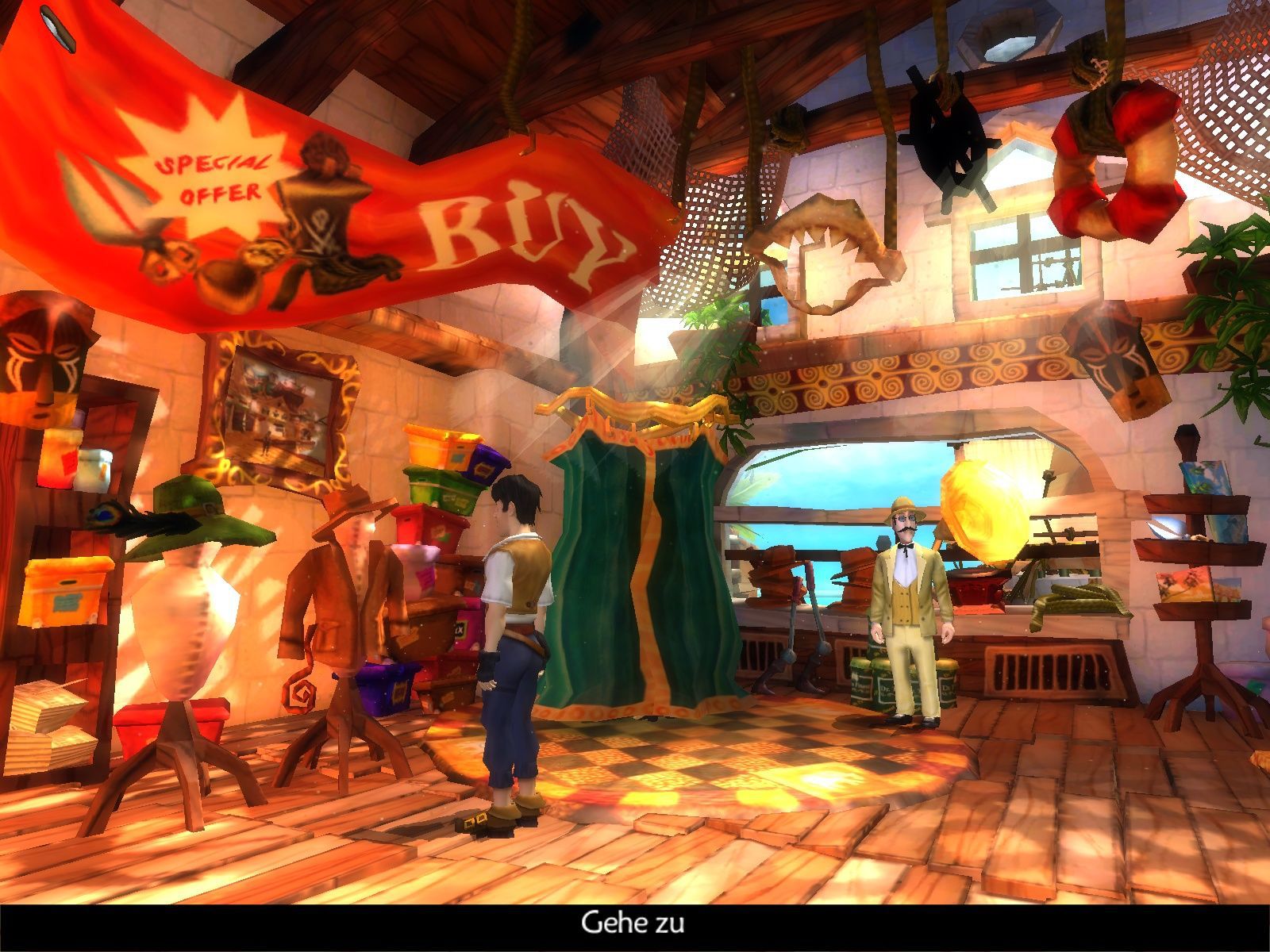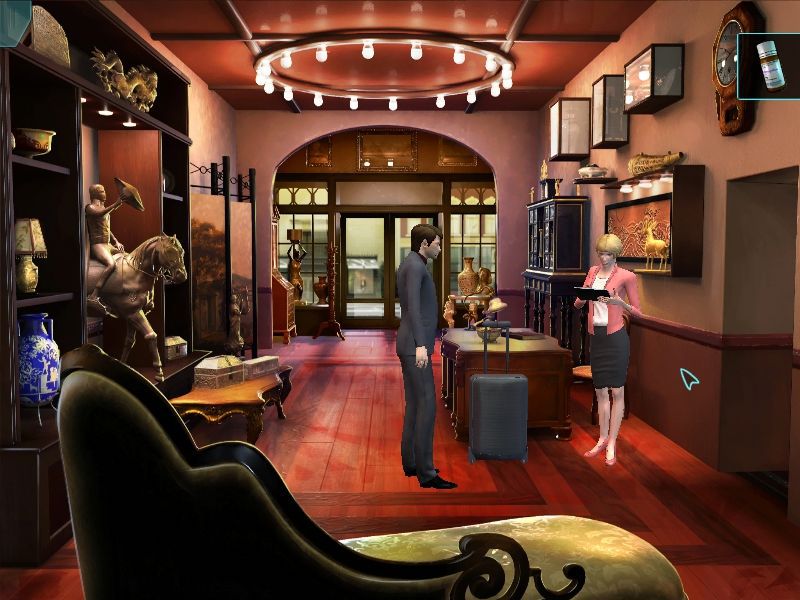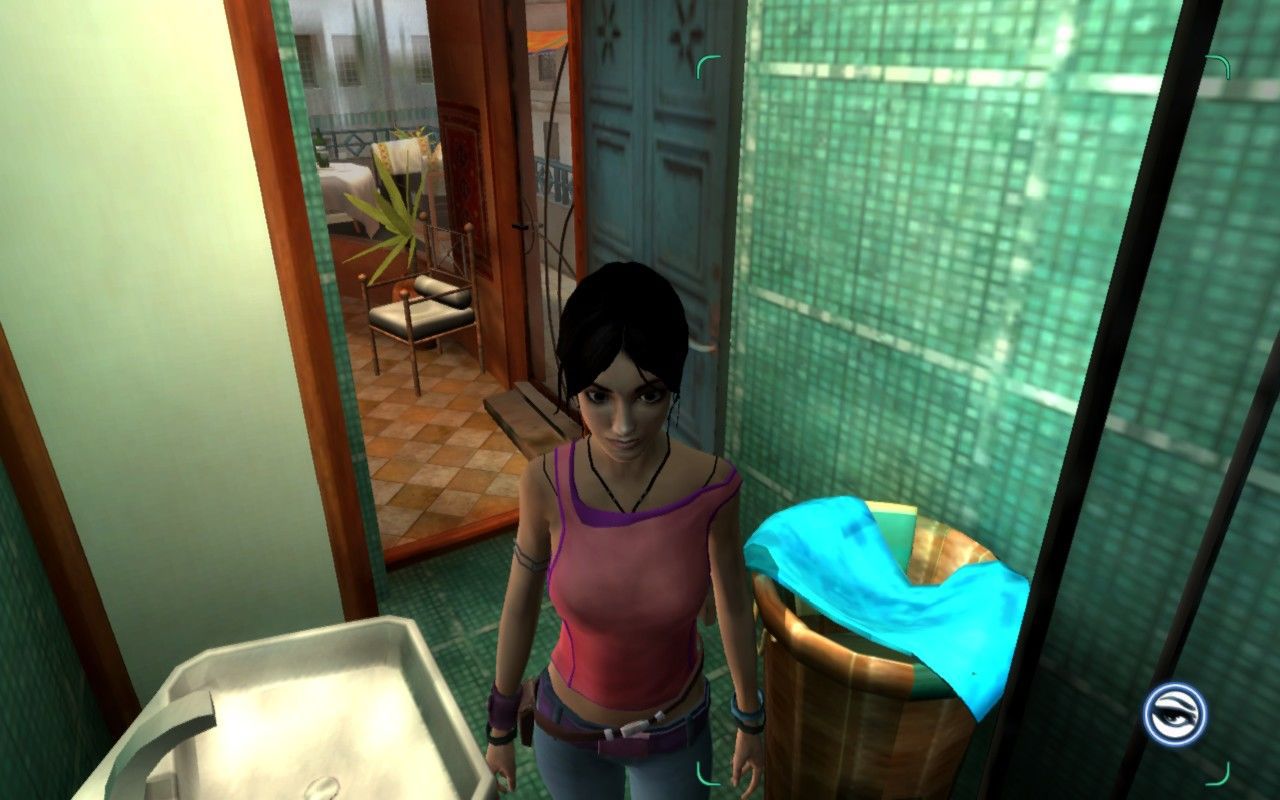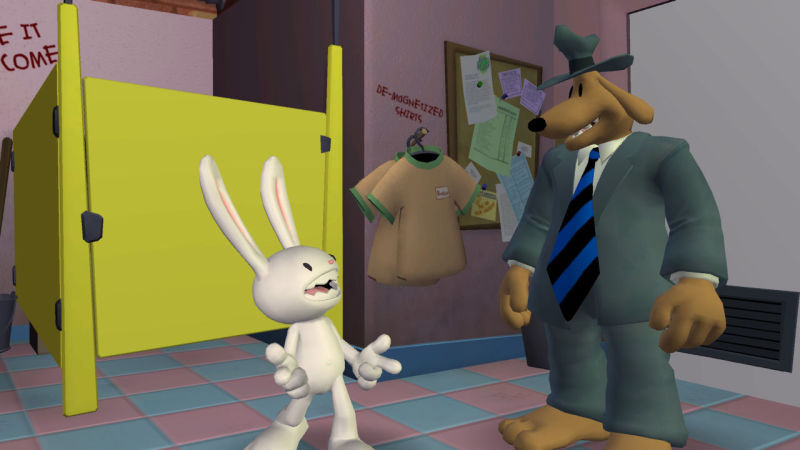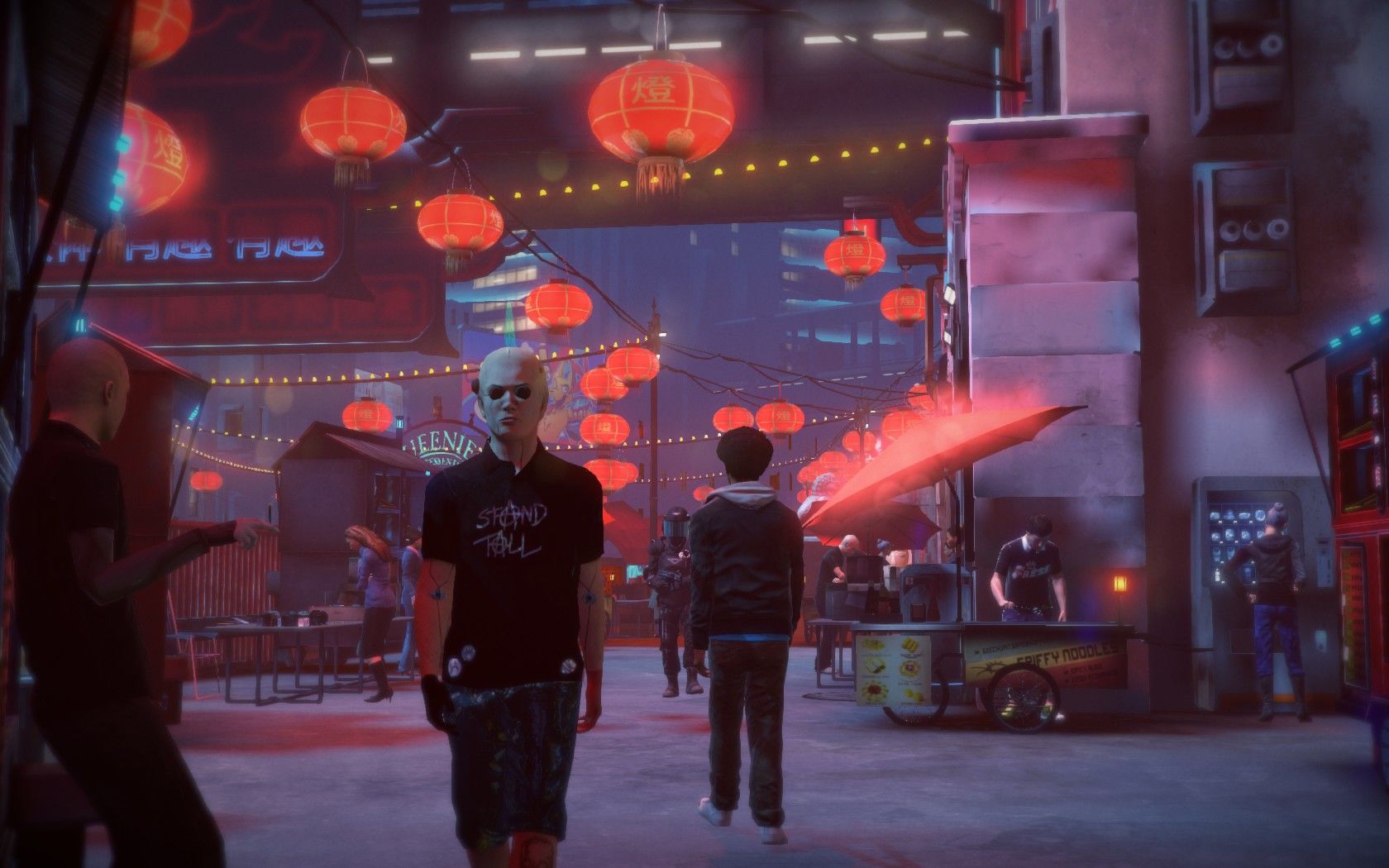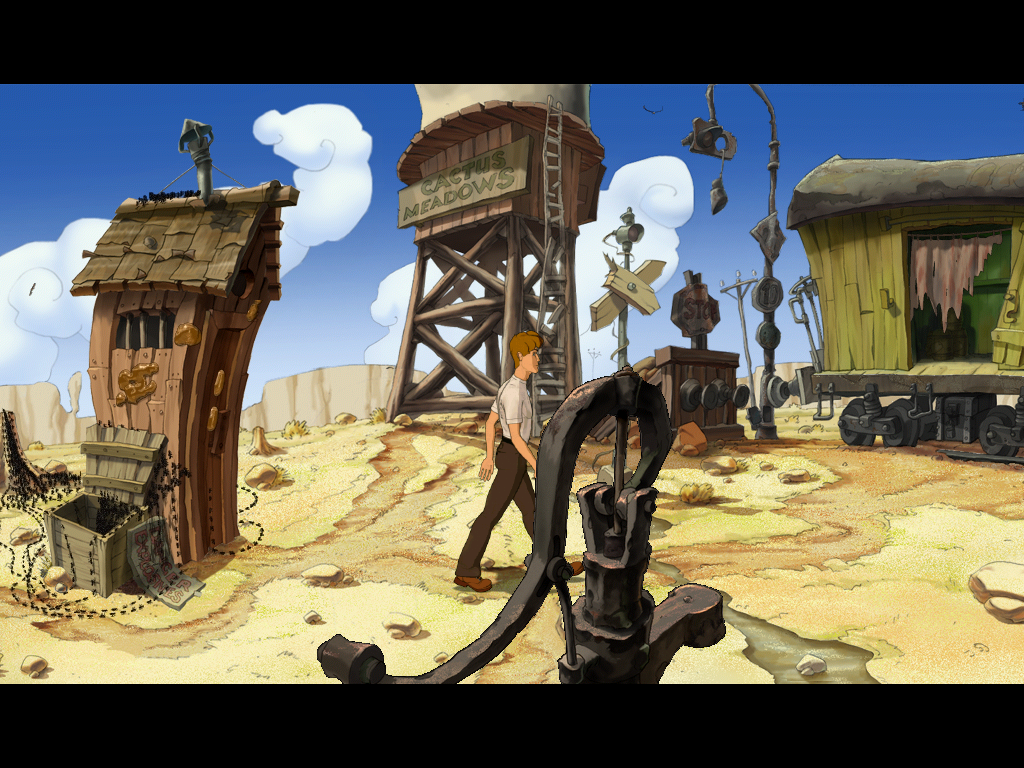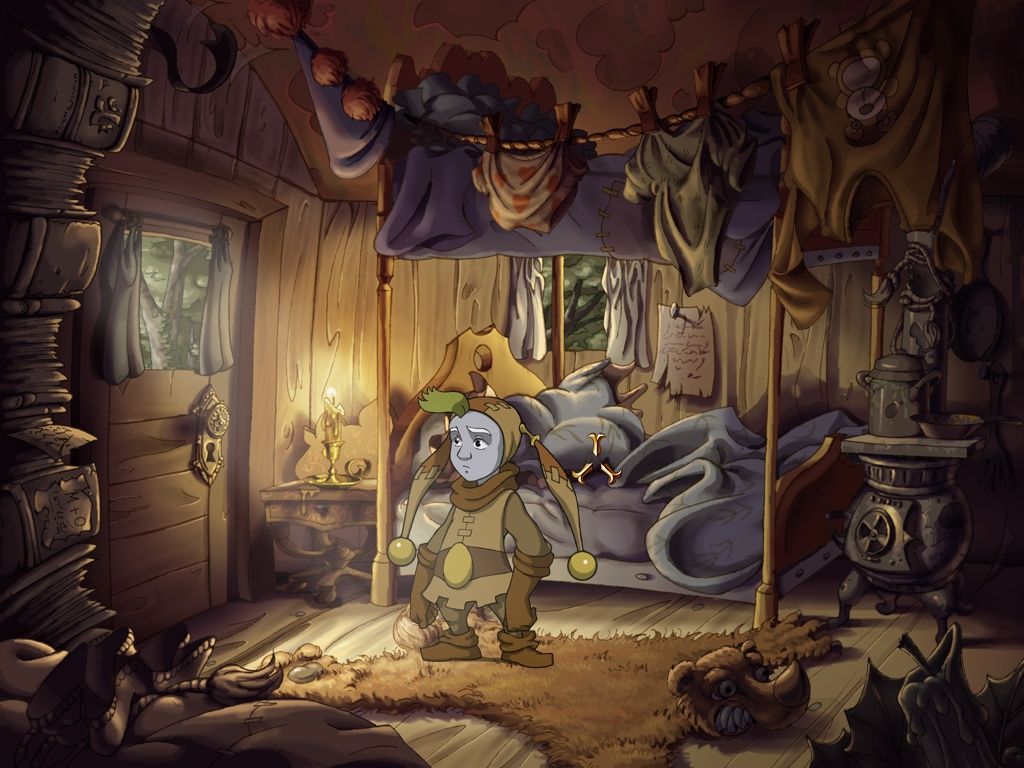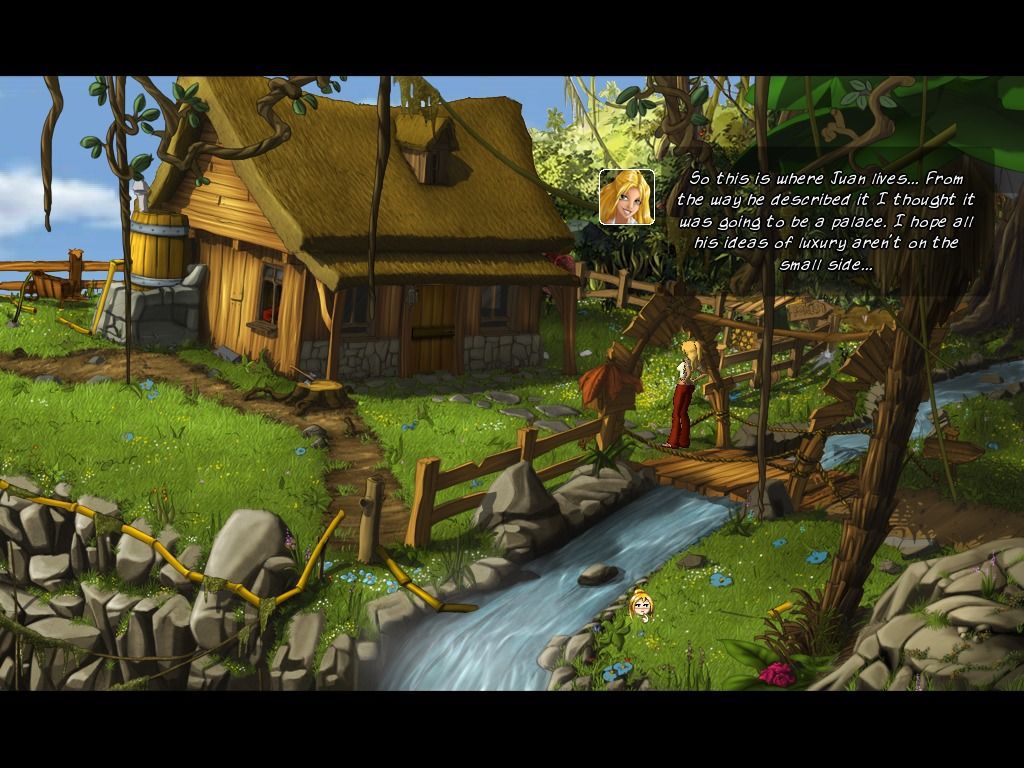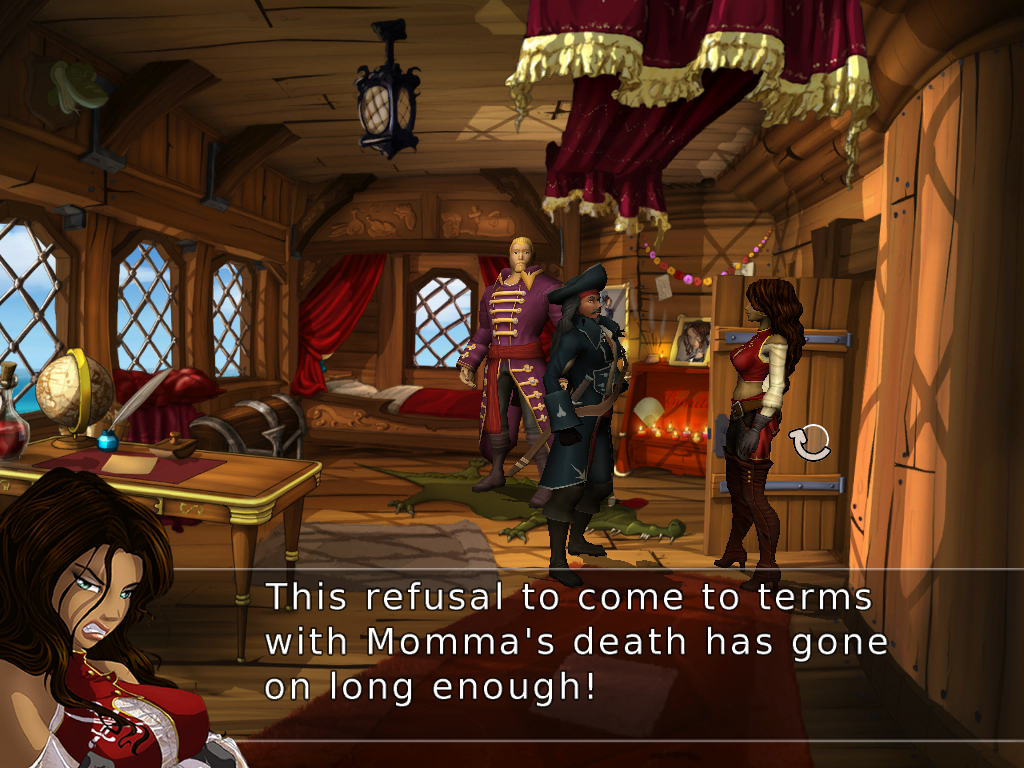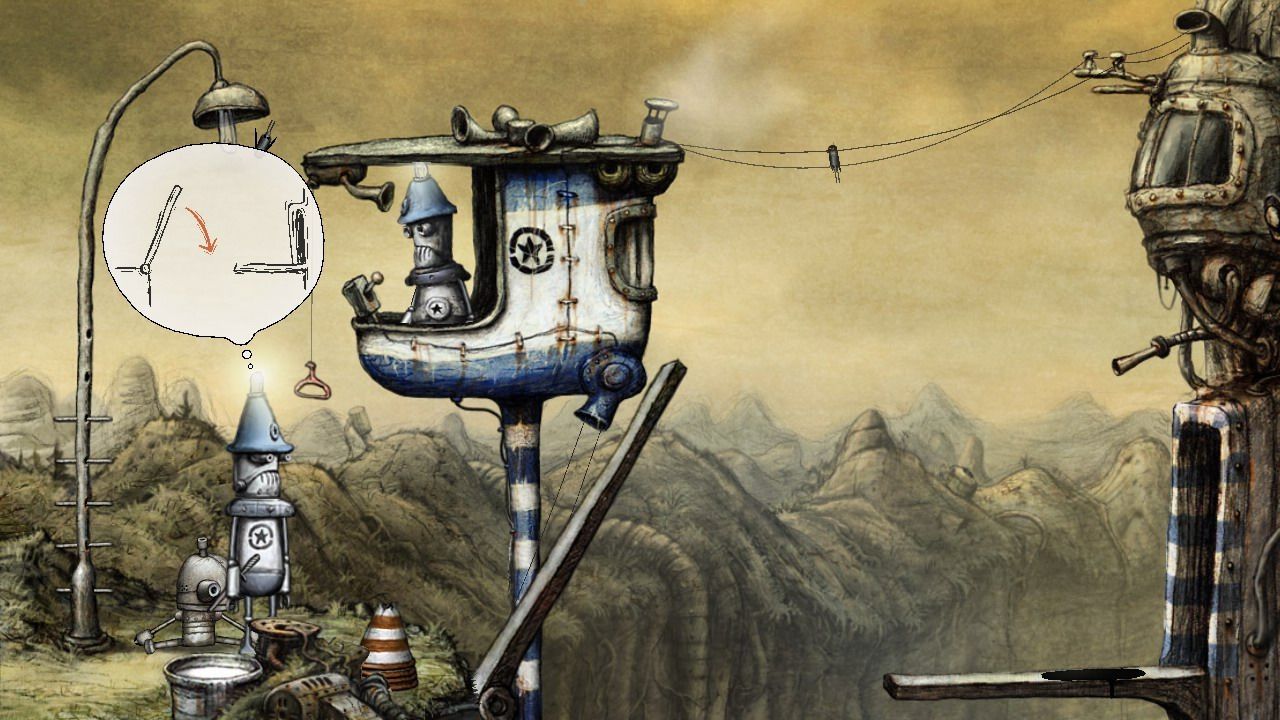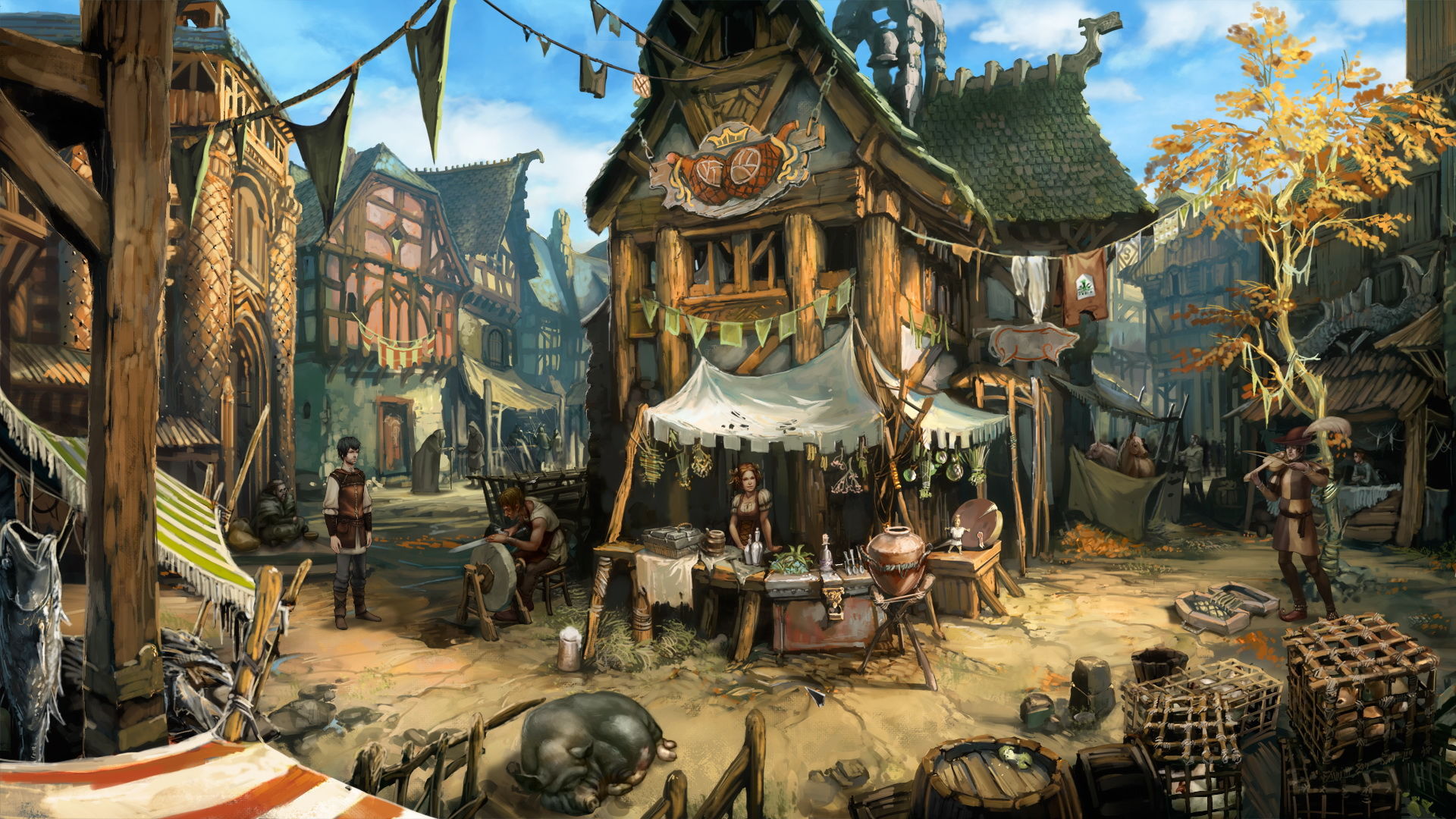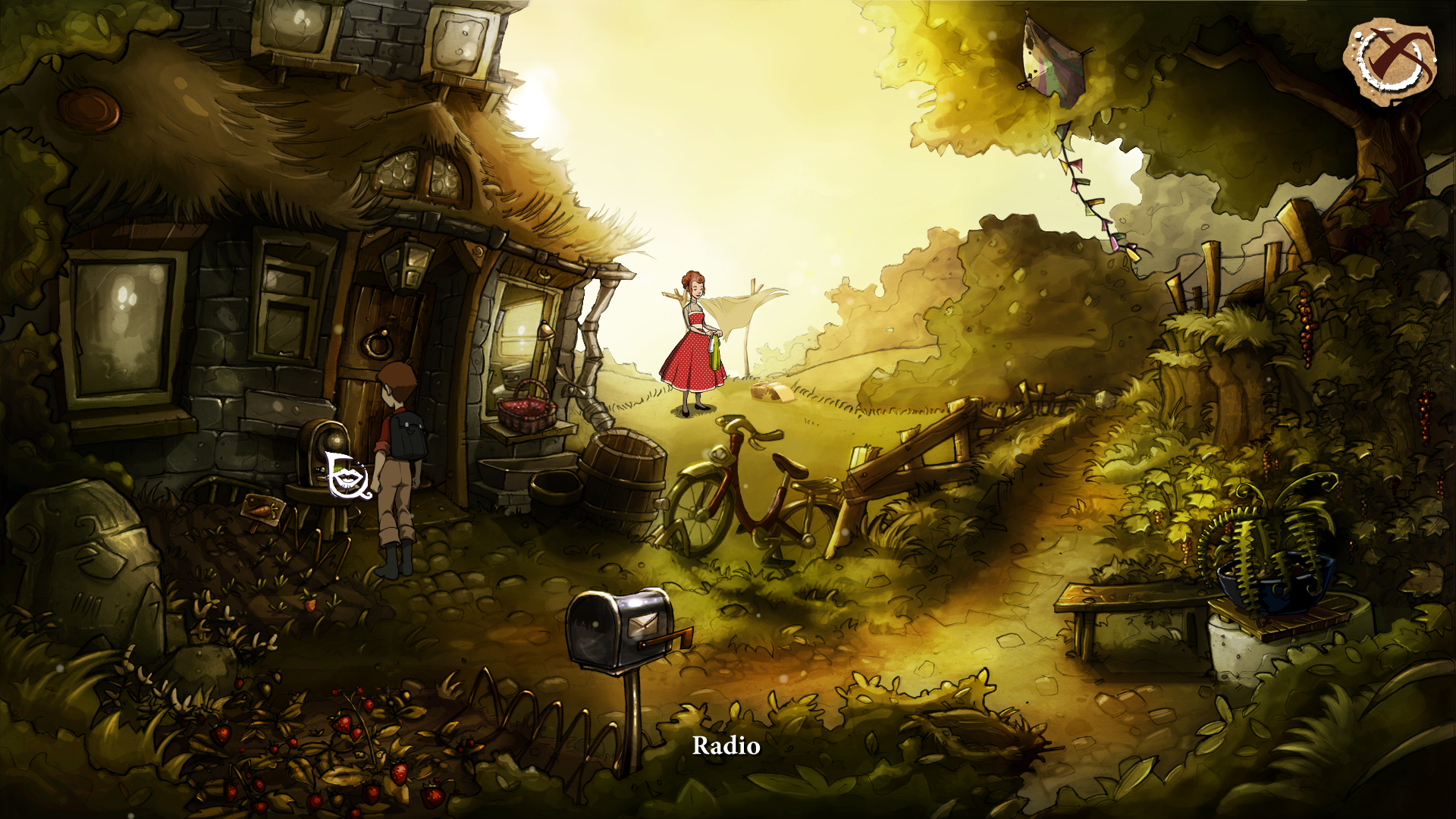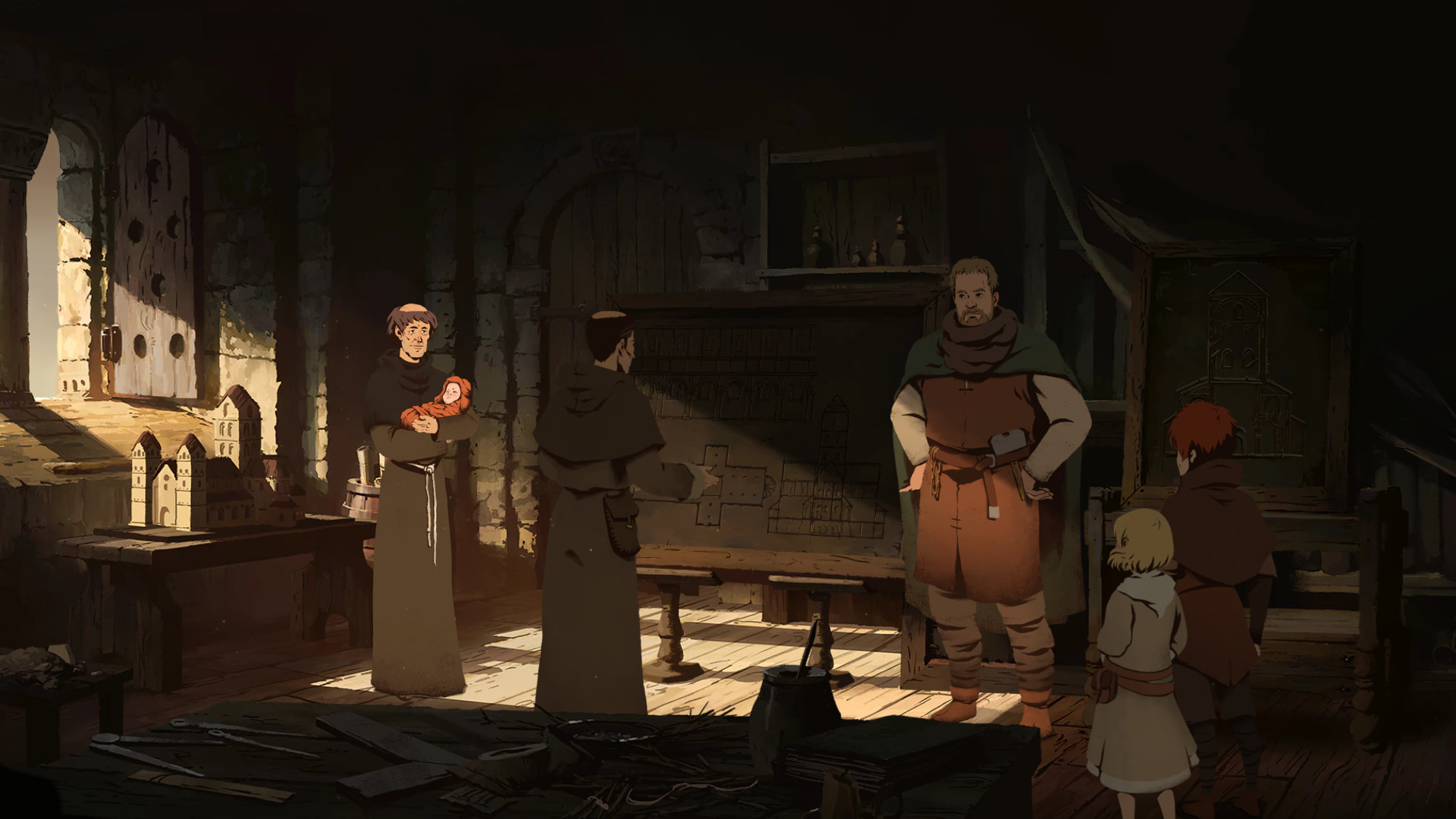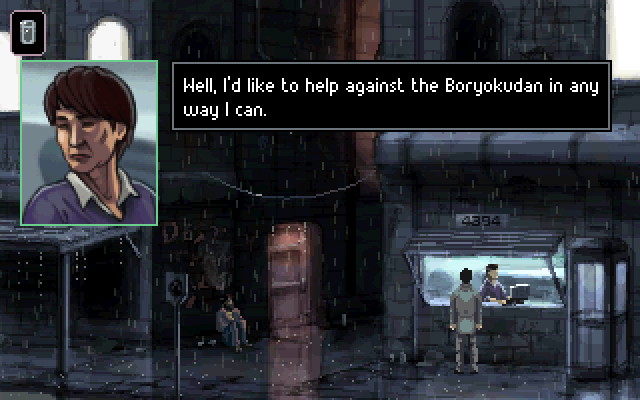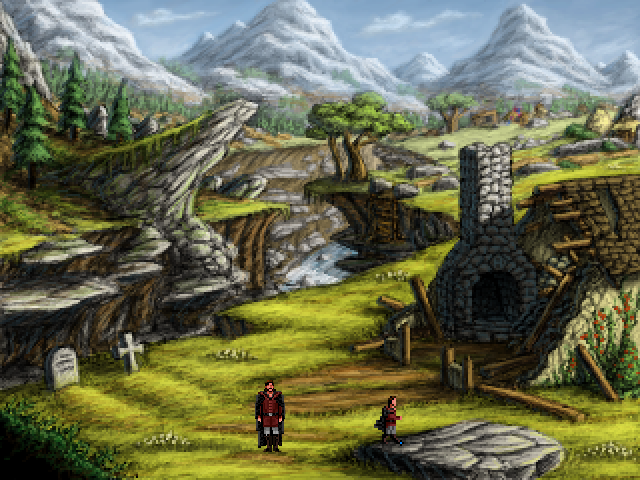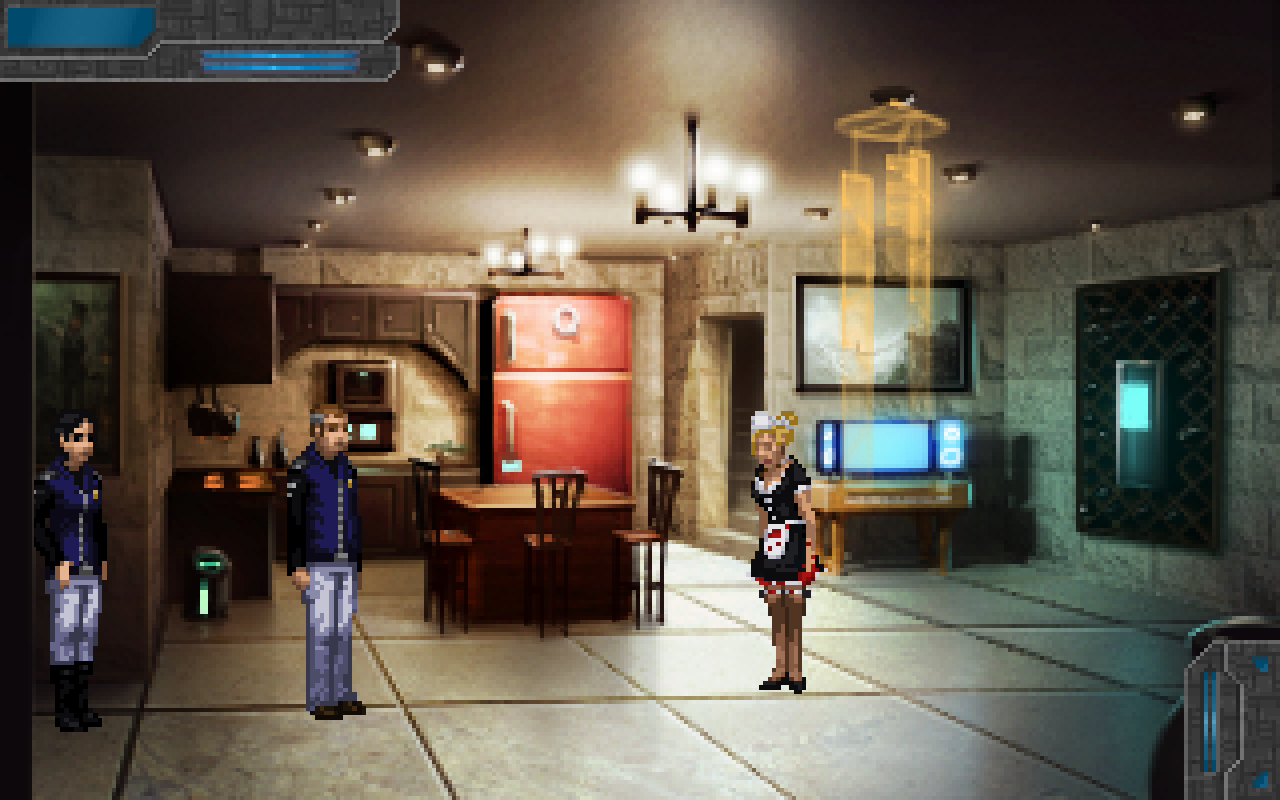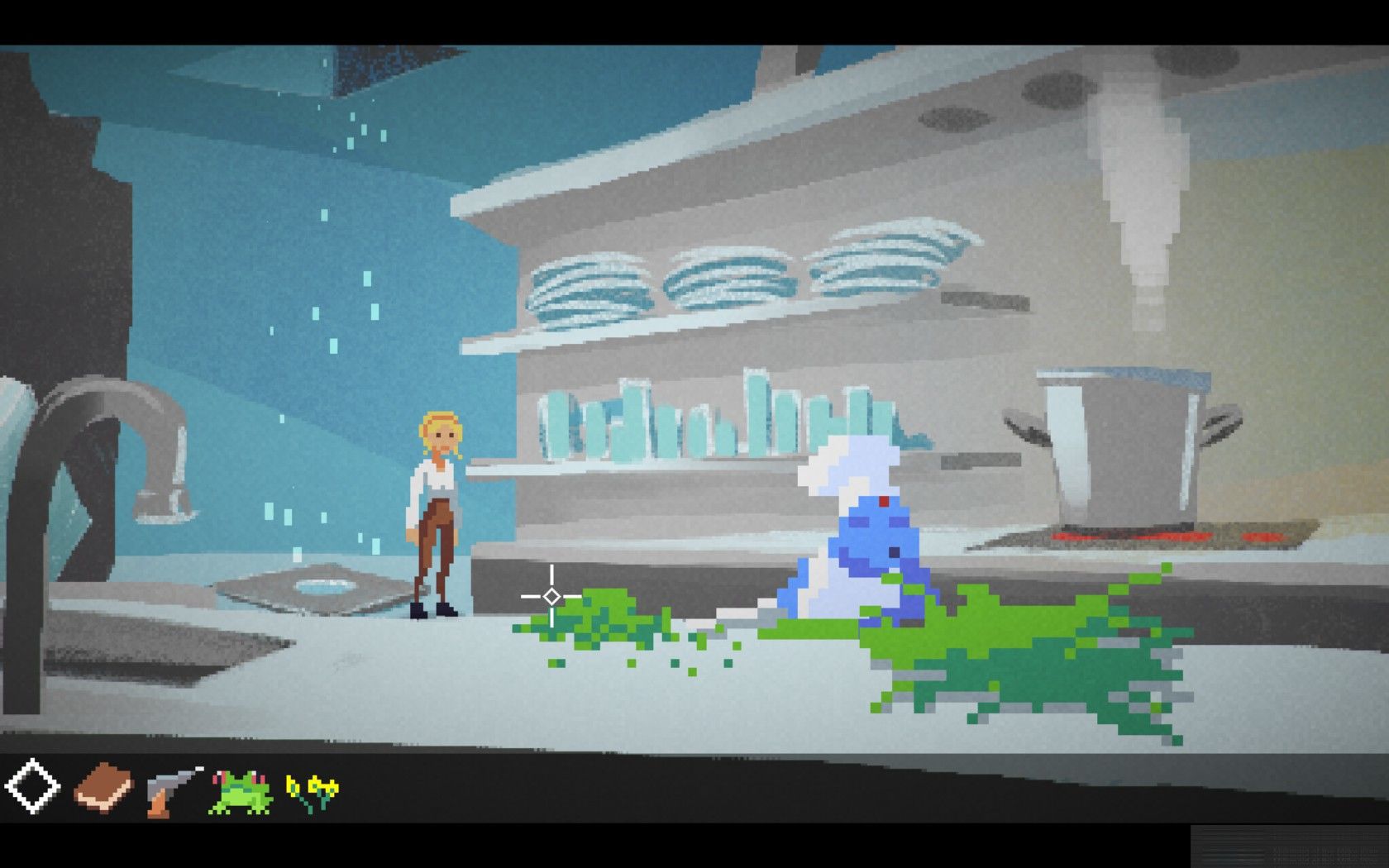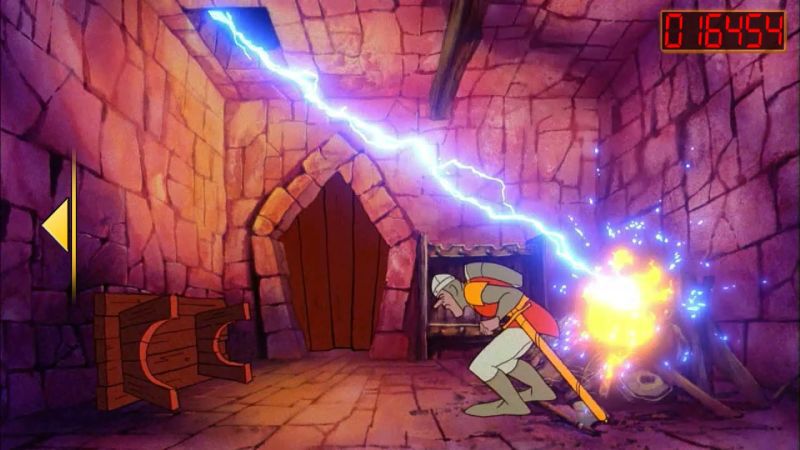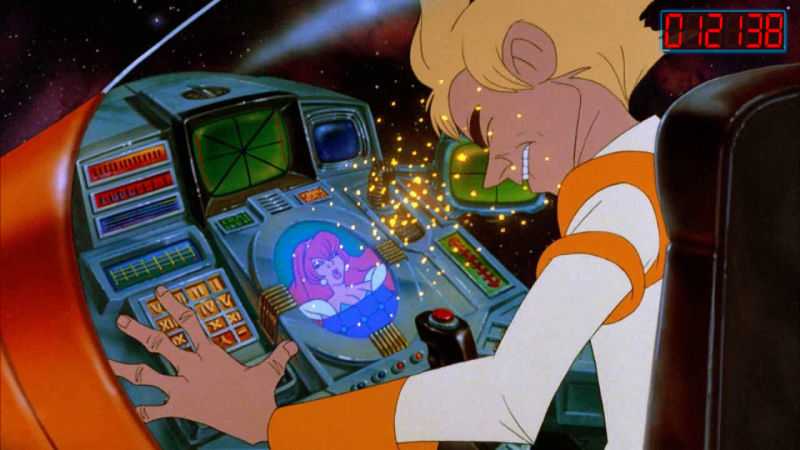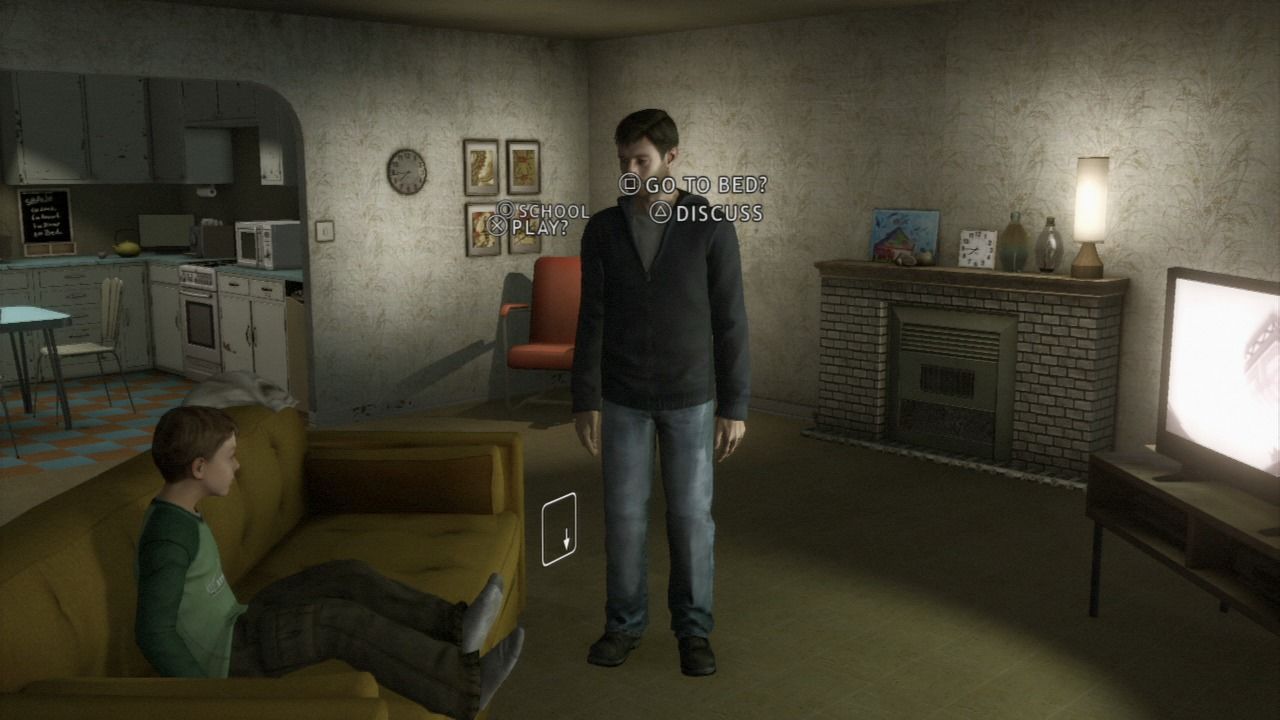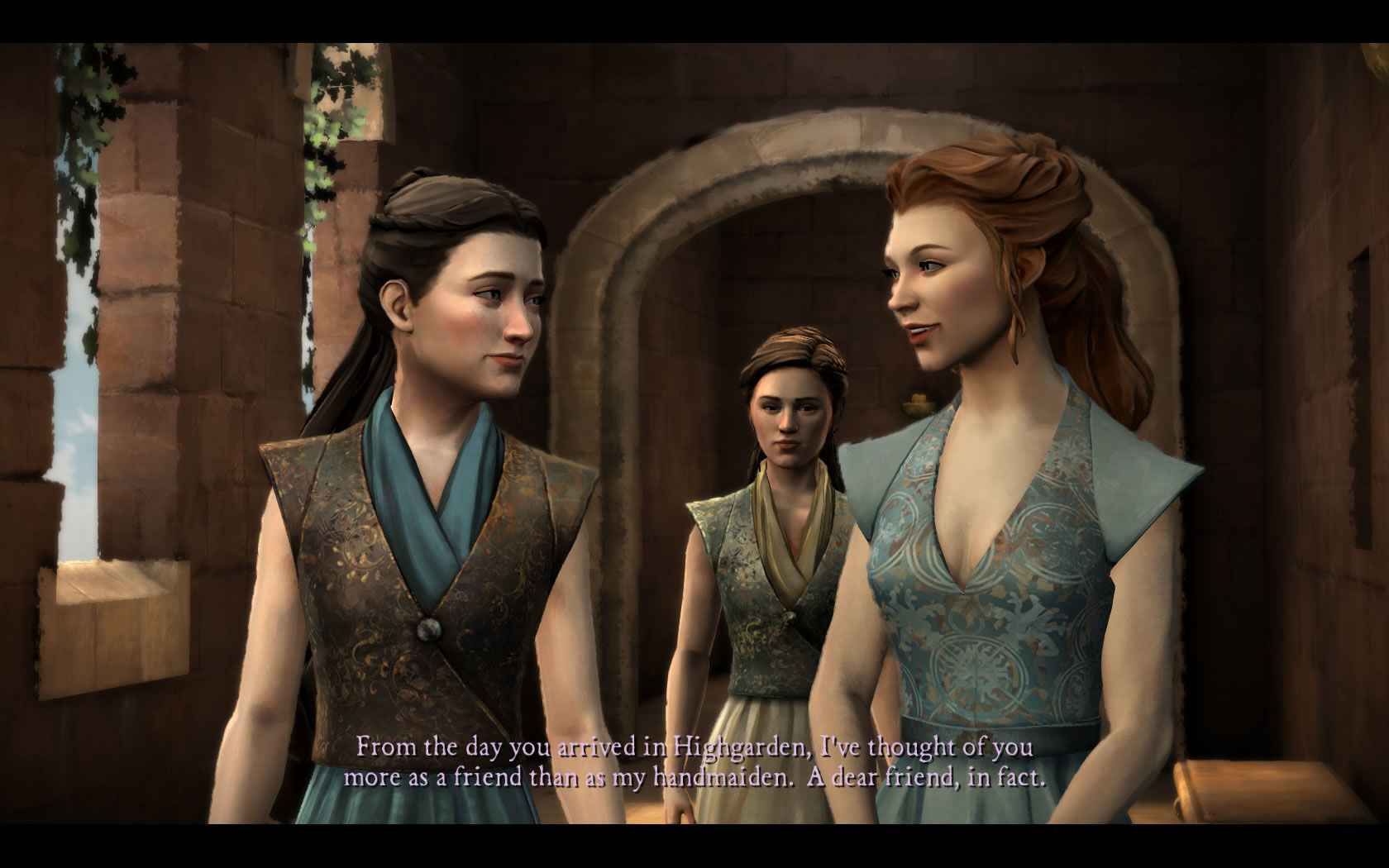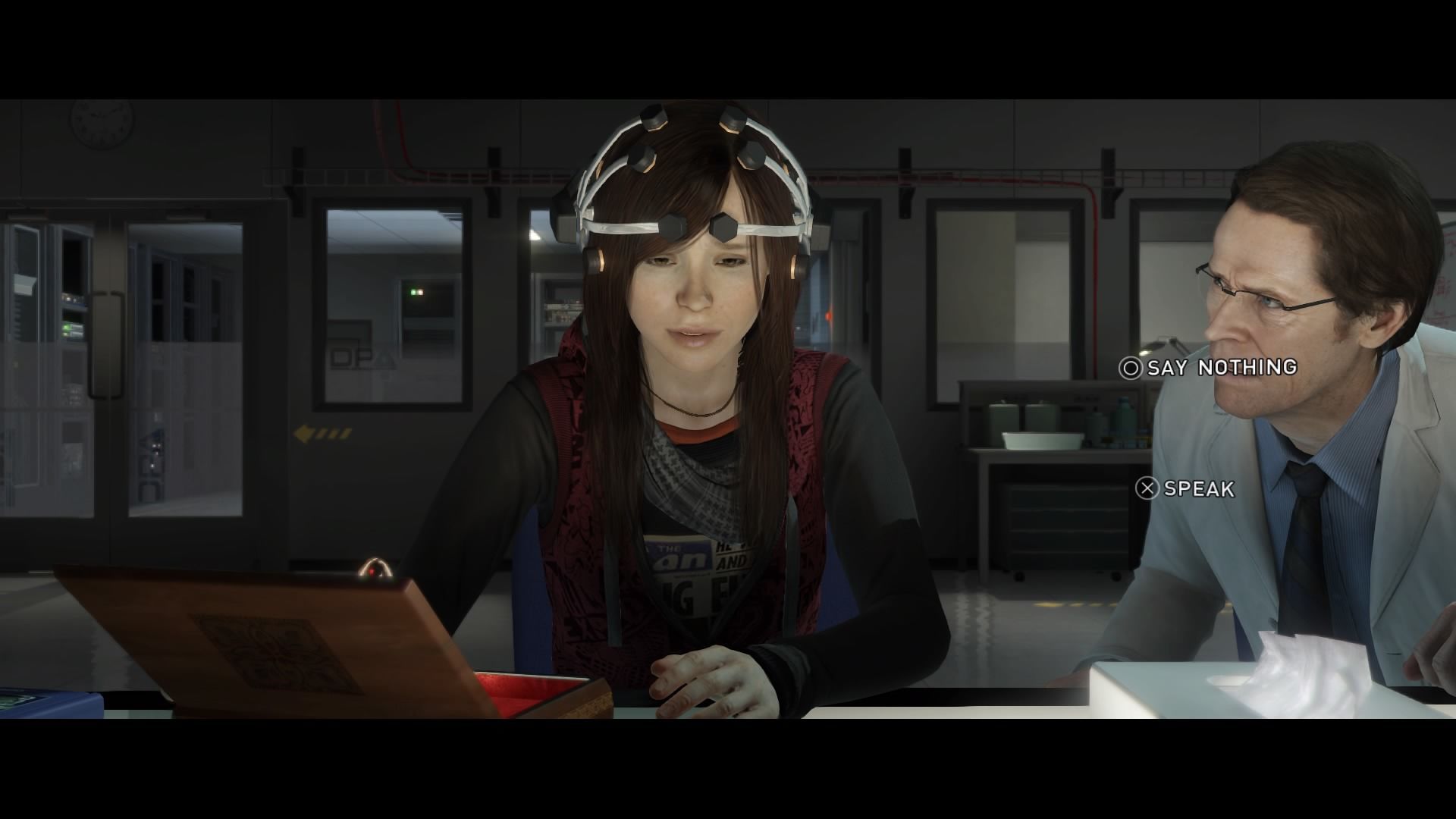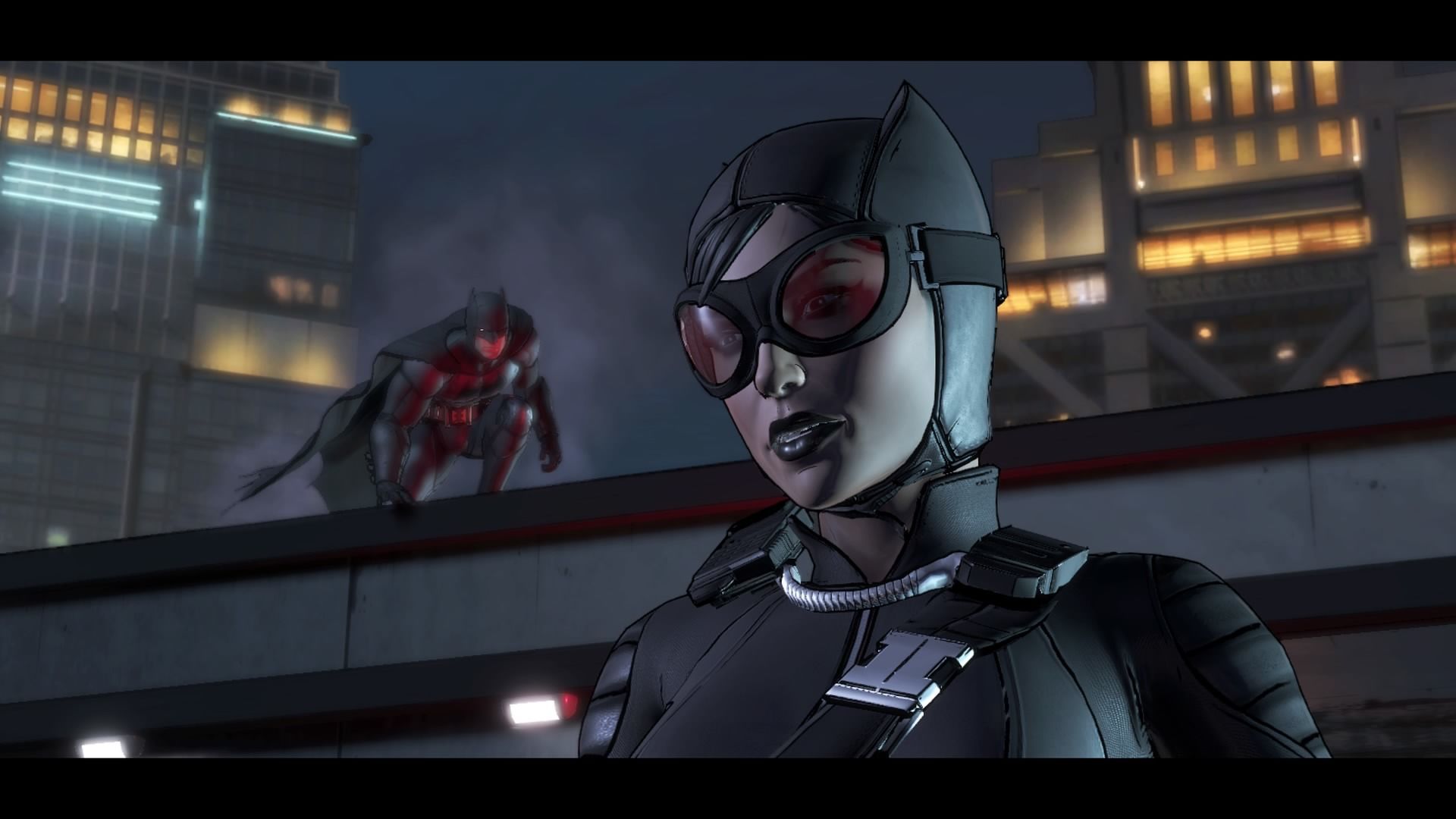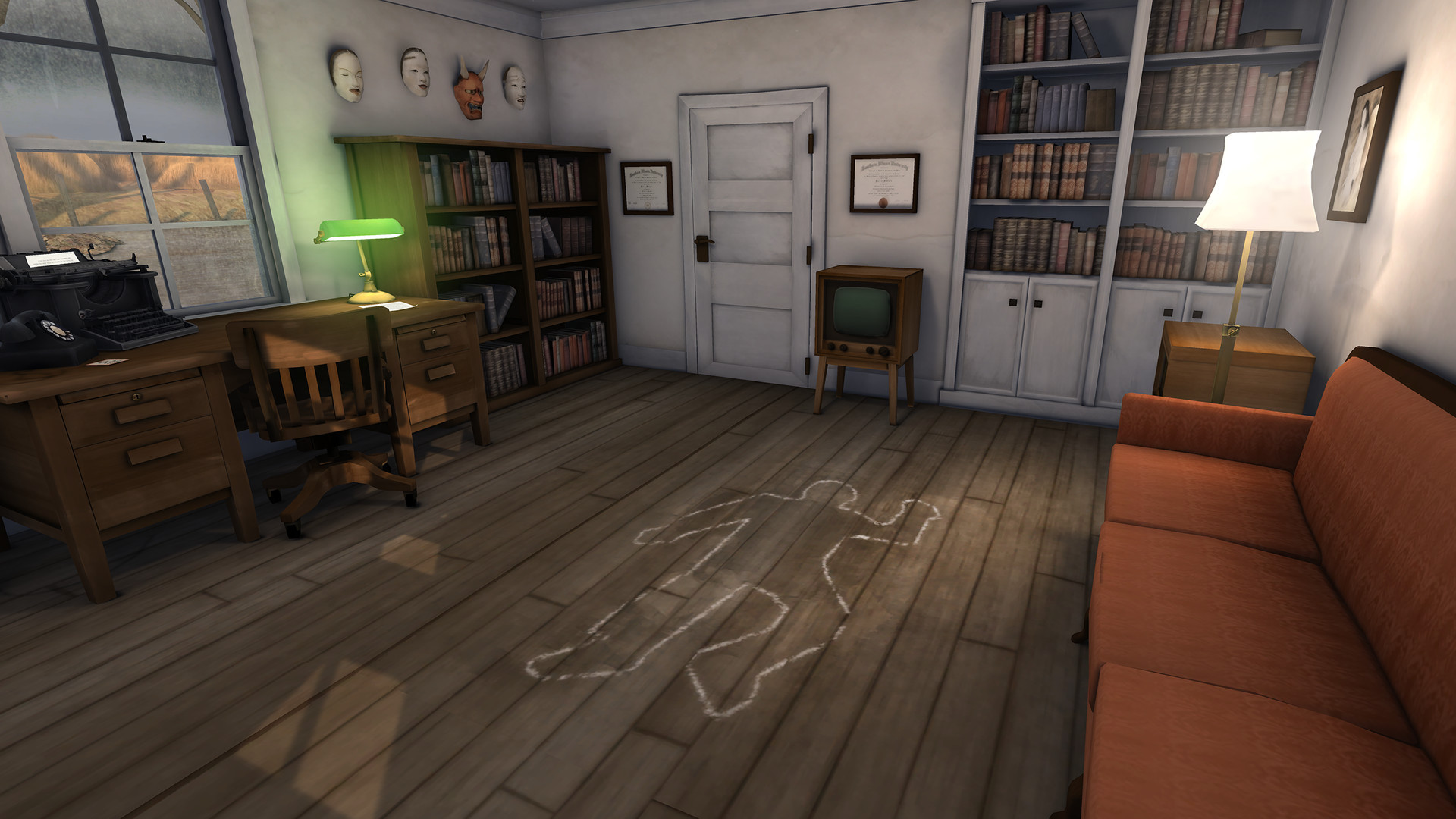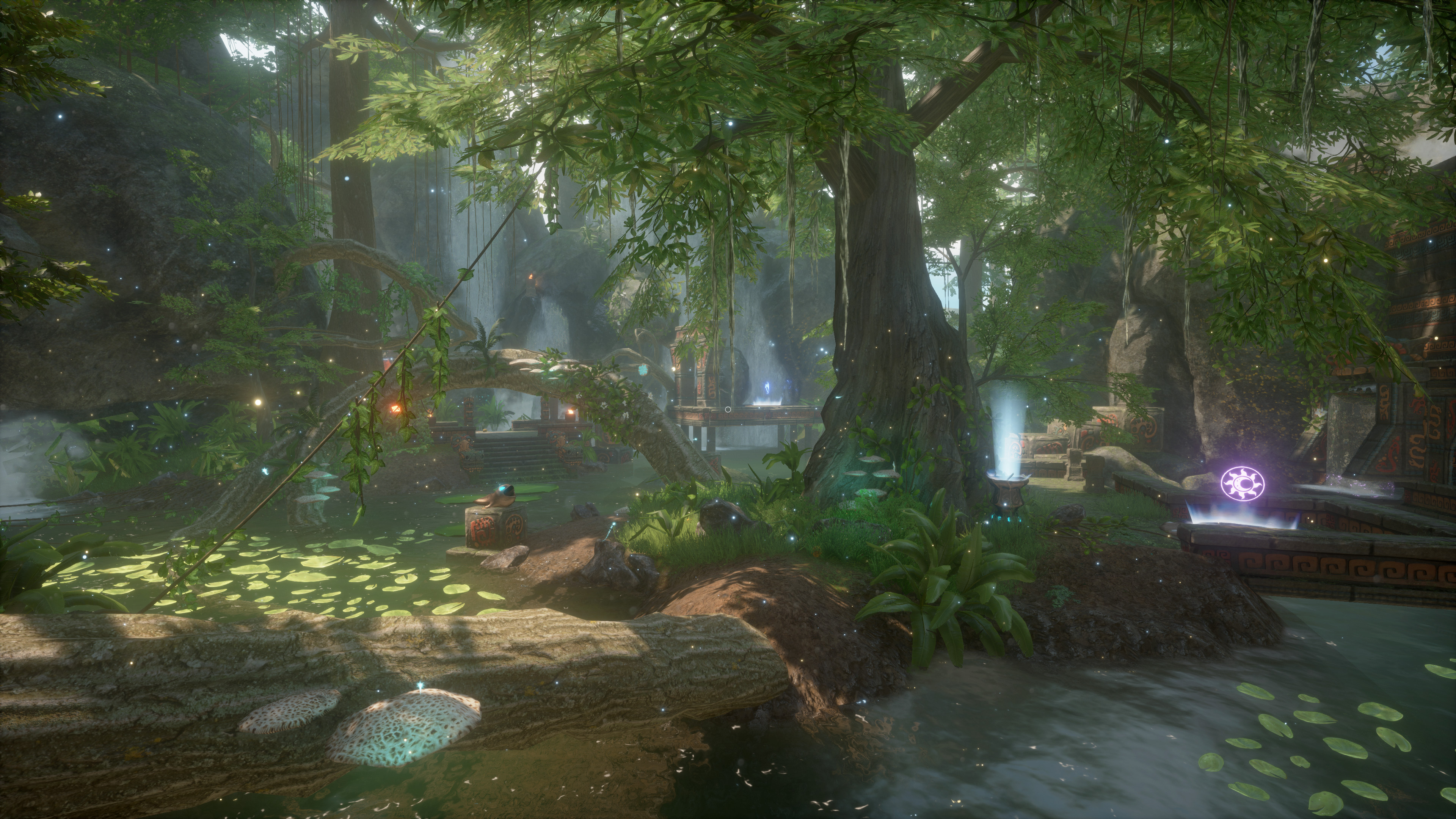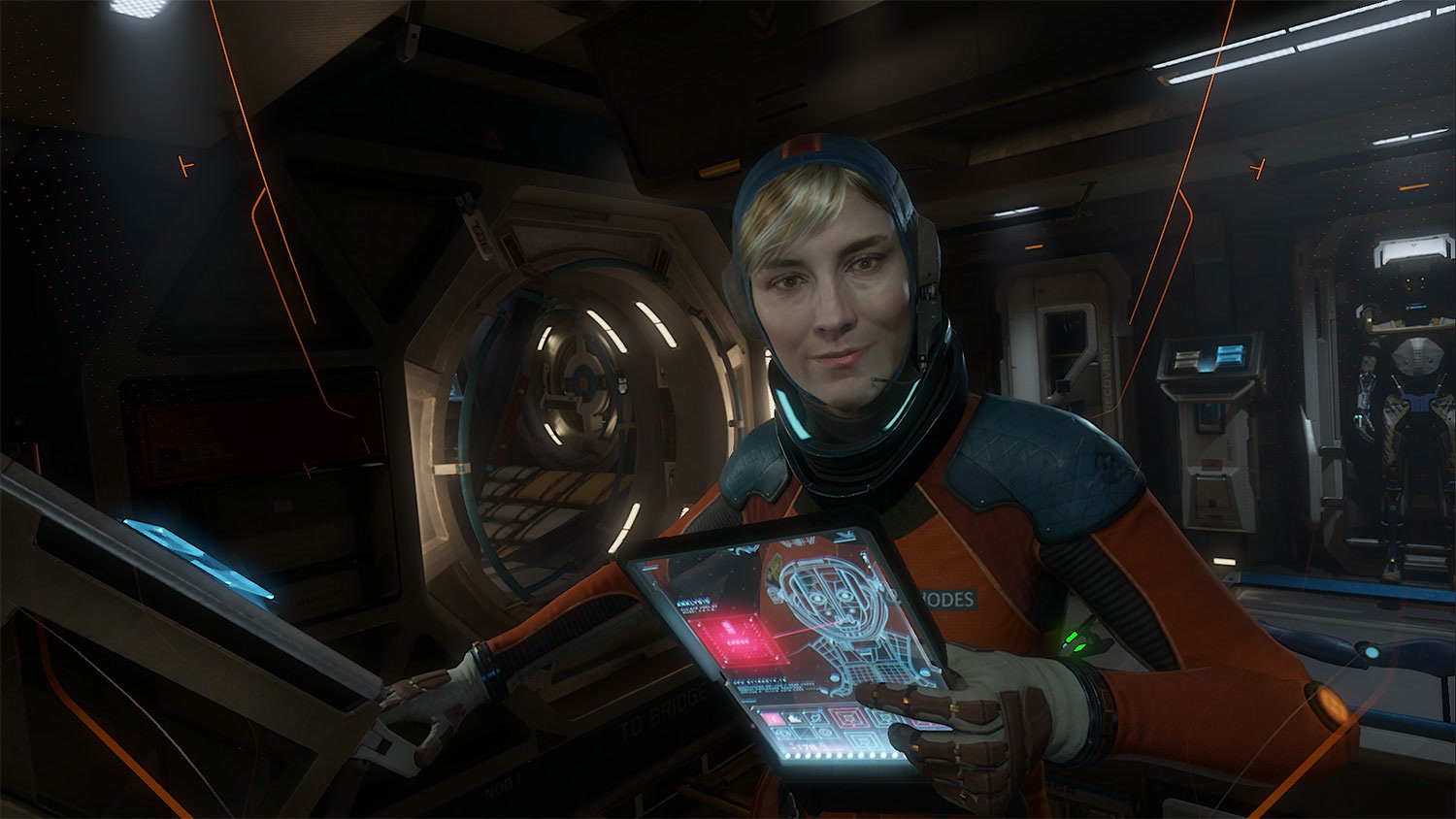Dexter
Arcane
- Joined
- Mar 31, 2011
- Messages
- 15,655
Maximum of 3 Choices!
Here is also a very helpful chronological list of graphical Adventure games: http://en.wikipedia.org/wiki/List_of_graphic_adventure_games
Text Adventures
The idea of the genre starting off Text Adventure games was conceived by Collosal Cave Adventure in 1976, they would go commercial with Infocom during the Early to Late 80s with games like the Zork Series (1980-1987), Softporn Adventure (1981), Starcross (1982), Deadline (1982), The Hobbit (1982), Planetfall (1983), The Hitchhiker's Guide to the Galaxy (1984), Cutthroats (1984), Sherlock (1984), A Mind Forever Voyaging (1985), Trinity (1986), Amnesia (1986), Leather Goddesses of Phobos (1986), Bureaucracy (1987):
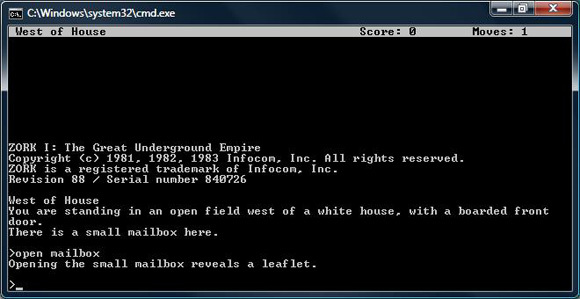
Graphical Parser Adventures
The “Adventure” genre and its legacy was pretty much coined with the AGI-style games rendered in early CGA and later EGA era graphics inspired by Text Adventures, Mystery House and Wizard and the Princess were early prototypes developed in 1980 by On-Line Systems (later to become SIERRA Online), but the commercial success started with King’s Quest in 1984 which was developed to release on IBM PC, most of the early titles still relied on text parsers though they had a graphical representation of what was happening on screen using SIERRAs AGI-Engine:


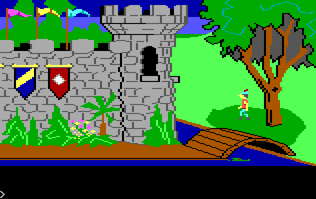
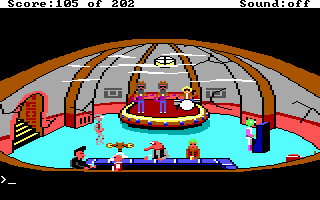
EGA Adventures (320x200)
The EGA style Adventures in 320x200 improved colors and experimented with different interface options, The Black Cauldron (1986) used keys for "select", "use" and "do", Labyrinth (1986) used "word wheels", but the lasting change for Adventure games came with the clickable verb interface in Maniac Mansion (1987) and Zak McKracken (1988), with Space Quest III (1989) SIERRA also supported mouse movement using SIERRAs SCI-Engine and Lucasfilm Games SCUMM-Engine:
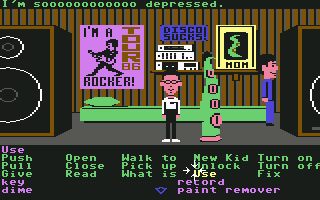

Various other influential titles from these eras: Mystery House (1980), The Wizard and the Princess (1980), Cranston Manor (1981), The Dark Crystal (1983), King's Quest I-IV (1984-1986), Space Quest I-III (1986-1988), Labyrinth (1986), The Black Cauldron (1986), Shadowgate (1987), Police Quest I-II (1987/1989), Leisure Suit Larry 1-3 (1987-1990), Laura Bow - The Colonel's Bequest (1989), Indiana Jones and the Last Crusade (1989), Quest for Glory 1-2 (1989/1990), Conquests of Camelot: The Search for the Grail (1990)
Other companies like Legend Entertainment took up the mantle and developed further Parser Adventures with graphical accompaniment into the Early 90s with titles like Spellcasting 101/201/301 (1990-1992), Timequest (1991), Gateway (1992), Eric the Unready (1993)
QVGA Adventures (320x200)
Early QVGA Adventures in 320x200 and beyond like The Secret of Monkey Island (1990), King’s Quest V (1990) or the Re-release of Loom (1991) and Remakes of Police Quest I/Space Quest I/Quest for Glory I came after and replaced text input with Point & Click interfaces entirely:


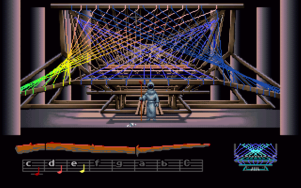
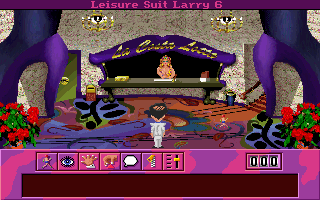
Various other influential titles from this era: King’s Quest V-VI (1990/1992), Leisure Suit Larry 5-6 (1991/1993), Police Quest III (1991), Space Quest IV-V (1991/1993), Conquests of the Longbow: The Legend of Robin Hood (1991), Laura Bow - The Dagger of Amon Ra (1991), Gobliiins 1-3 (1991-1993), Lure of the Temptress (1992), Star Trek: 25th Anniversary/Judgment Rites (1992/1993), Indiana Jones and the Fate of Atlantis (1992), Quest for Glory 3-4 (1992/1993)
Other titles that came a bit later like Sam&Max;: Hit the Road (1993), Day of the Tentacle (1993), Simon the Sorcerer (1993), Full Throttle (1995) or Discworld (1995) largely stayed at these low pixel resolutions but improved and refined the art and drawing style, as well as changed the interface up a lot adding things like context-menus, later often labeled "verb coins":
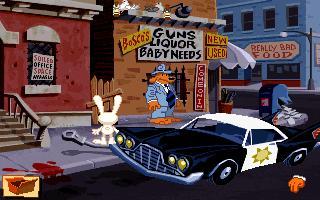
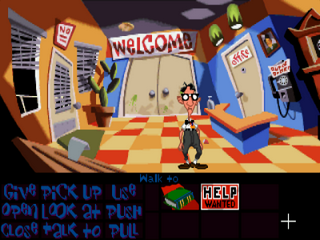
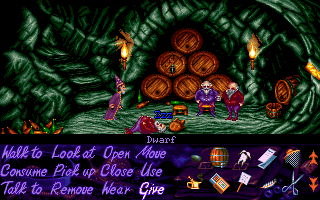
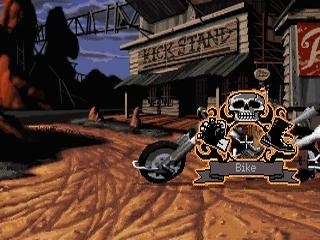


Various other influential titles from this era: The Lost Files of Sherlock Holmes: The Case of the Serrated Scalpel (1992), Gabriel Knight (1993), Beneath a Steel Sky (1994), Death Gate (1994), Legend of Kyrandia 3: Malcolm’s Revenge (Pre-Rendered 3D) (1994), Simon the Sorcerer II (1995), The Dig (1995), Flight of the Amazon Queen (1995), Kingdom O’Magic (Pre-Rendered 3D) (1996), Chewy: Escape from F5 (1997)
VGA/Animated Adventures (640x480)
Later titles like Discworld II (1996), Toonstruck (1996) or Curse of Monkey Island (1997) came with a more detailed painterly/comic drawing style at VGA resolution (640x480):
Various other influential titles from this era: Woodruff and the Schnibble of Azimuth (1994), King’s Quest VII: The Princeless Bride (1994), Torin’s Passage (1995), Space Quest 6: The Spinal Frontier (1995), The Next Generation – A Final Unity (1995), I Have No Mouth and I Must Scream (1995), Beavis and Butt-head in Virtual Stupidity (1995), Shannara (1995), Leisure Suit Larry: Love for Sail! (1996), The Neverhood (Claymation) (1996), The Gene Machine (1996), Broken Sword: Shadow of the Templars (1996), Ace Ventura (1996), Orion Burger (1996), Broken Sword II: The Smoking Mirror (1997), Tony Tough (1997), The Last Express (1997), The Feeble Files (1997), Jack Orlando (1997), Blade Runner (1997), Sanitarium (1998), The Longest Journey (Pre-Rendered 3D) (1999), Gilbert Goodmate (2001)
3D First Person/Puzzle Games
The sub-genre of 3D First Person (mostly) Adventure/Puzzle games that Myst (1993) started was continued with sequels like Riven (1997) and Uru (2003) and inspired a lot of clones over the years like Inca I+II (1992-1993), Shivers 1-2 (1995-1997) Lighthouse: The Dark Being (1996), Timelapse (1996), Obsidian (1997), Morpheus (1998), Dracula 1-3 (1999-2008), Cydonia: Mars (1999), Reah (1999), Atlantis I-IV (2000-2004), Schizm/Mysterious Journey Series (2001-2005), Rhem 1-4 (2002-2010), Dark Fall 1-3 (2002-2009), Sallambo (2003), Sentinel: Descendants in Time (2004), Aura 1+2 (2004-2007) and various others:
Is especially getting a resurgence nowadays with a lot of Indie titles like Miasmata (2012), Kairo (2013), ASA: A Space Adventure Remastered (2015), Homesick (2015), Ether One (2014), Cradle (2015), Dream (2015), The Vanishing of Ethan Carter (2014), The Witness (2016), Obduction (2016), Maize (2016), Quern - Undying Thoughts (2016), XING: The Land Beyond (2017), Aporia: Beyond the Valley (2017) and so on but I’m not sure I would effectively call a part of the “Graphic Adventure” game genre.
FMV / Interactive movie games
The Mid-90s obsession with FMV (Full Movie Video) or Interactive movie games sparked by the popularity of the CD-ROM that had been bubbling since the early 80s on Laserdiscs with titles like Dragon’s Lair or Space Ace: http://en.wikipedia.org/wiki/List_of_interactive_movies with titles like Night Trap (1992), The 7th Guest (1993), Tex Murphy Series (1994-1998), Phantasmagoria (1995), Gabriel Knight 2: The Beast Within (1995), Urban Runner (1996), Black Dahlia (1998) usually running at common 640x480 VGA resolution and kind of dying off in the late 90s, although I guess titles like Fahrenheit or the late Heavy Rain/Beyond: Two Souls could be counted as a 3D continuation of the particular sub-genre.
3D Adventures
3D Adventures were largely dreaded in the early 3D Adventure gaming era largely driven by the success of the PlayStation and later PlayStation 2 and the subsequent descent of the Point & Click Adventure genre in the “Mainstream” with a few early titles managing to pull it off relatively well aside from their controls like Grim Fandango (1998), Discworld Noir (1999) or Syberia (2001):
And others not so much like Quest for Glory V (1998), Gabriel Knight 3 (1999), Escape from Monkey Island (2000), Simon the Sorcerer 3D (2002) and so on that were merely a pale imitation of what people loved about them in the first place.
Early titles were generally low resolution with a lot of Aliasing due to limits in the display technology and graphics rendering requirements, keeping to 640x480 like VGA Adventures, later 3D Adventures supported larger High Definition resolutions starting with 1024x768 to 1080p:
Various other influential titles from this era: Alone in the Dark: The New Nightmare (2001), Syberia 1-2 (2001/2004), Largo Winch (2002), Sherlock Holmes Series by Frogwares (2002-2016), Black Mirror 1-2 (2003/2009), Broken Sword: The Sleeping Dragon (2003), Leisure Suit Larry: Magna Cum Laude (2004), Still Life 1-2 (2005/2009), Ankh 1-3 (2005-2007), Dreamfall (2006), Tony Tough 2 (2006), Broken Sword: The Angel of Death (2006), Sam & Max Seasons by Telltale (2006-2010), Jack Keane 1-2 (2007-2013), Ceville (2009), Wallace and Gromit Adventures by Telltale (2008), Tales of Monkey Island by Telltale (2009), Ghost Pirates of Vooju Island (2009), The Book of Unwritten Tales 1-2 (2009/2015), Back to the Future by Telltale (2010), Haunted (2011), The Raven – Legacy of a Master Thief (2013), Moebius: Empire Rising (2014), Dreamfall Chapters (2014), Life Is Strange (2015), King's Quest (2015), Silence (2016), Syberia 3 (2017)
High Definition 2D Adventure games
Many largely European gaming companies stayed faithful to the stylistic choices of VGA Adventures, but used 1024x768 and higher definition resolutions continuing to produce mediocre/moderate to high-quality hand-painted 2D Adventure games: Runaway 1-3 (2001-2009), Clever & Smart – A Movie Adventure (2004), Secret Files Tunguska 1-3 (2006-2012), A Vampyre Story (2008), So Blonde (2008), Edna bricht aus (2008), Machinarium (2009), Emerald City Confidential (2009), The Whispered World (2009), Hector: Badge of Carnage (2010), A New Beginning (2010), Gray Matter (2010), Jolly Rover (2010), The Next Big Thing (2011), Dark Eye: Chains of Satinav (2011), Captain Morgane and the Golden Turtle (2012), The Dream Machine (2012), Deponia 1-4 (2012-2016), Yesterday (2012), Broken Sword 5 (2013), The Night of the Rabbit (2013), Memoria (2013), Broken Age (2014), Stasis (2015), Armikrog (2015), Paradigm (2017), Ken Follett's The Pillars of the Earth (2017)
Reinvented Pixel Adventure games
New Pixel Adventures inspired by QVGA Adventures also emerged as a distinct style, mostly made with Adventure Game Studio (AGS) with several notable exceptions using their own or different engines: 5 Days a Stranger/7 Days a Skeptic/Trillby’s Notes/6 Days a Sacrifice (2003-2007), The Blackwell Series (2006-2014), The Shivah (2006/2013), Ben There Dan That! (2008), Gemini Rue (2011), Resonance (2012), Primordia (2012), Heroine's Quest (2014), Quest for Infamy (2014), A Golden Wake (2014), Technobabylon (2015), Dropsy (2015), Kathy Rain (2016), Shardlight (2016), Milkmaid of the Milky Way (2017), Thimbleweed Park (2017)
QTE-fest Interactive movies
First developed by Cinematronics with Dragon's Lair and Space Ace in the Early 80s, they were repopularized by Telltale Games and Quantic Dreams very recently especially for game consoles: Fahrenheit (2005), Heavy Rain (2010), The Walking Dead (2012-2016), The Wolf Among Us (2013), Beyond: Two Souls (2013) Tales from the Borderlands (2014), Game of Thrones (2014), Batman - The Telltale Series (2016), Detroit: Become Human (2018)
Hidden Object Games
These things that are especially popular among Older Women: http://store.steampowered.com/tags/en/Hidden Object/#p=0&tab=TopSellers
Virtual Reality Adventure games
Appeared very recently with the Advent of Virtual Reality in popular culture and gaming, they have spillover in the 3D FPS/Puzzle Game genre with several of those games getting VR ports: Dead Secret (2016), The Vanishing of Ethan Carter (2016), POLLEN (2016), The Solus Project (2016), Obduction (2016), The Assembly (2016), XING: The Land Beyond (2017), Lone Echo (2017)
Any observations or suggestions as to the categorization, fixing mistakes made or expanding upon are welcome. Topic reserves the right to be subject to alterations. :D
Here is also a very helpful chronological list of graphical Adventure games: http://en.wikipedia.org/wiki/List_of_graphic_adventure_games
Text Adventures
The idea of the genre starting off Text Adventure games was conceived by Collosal Cave Adventure in 1976, they would go commercial with Infocom during the Early to Late 80s with games like the Zork Series (1980-1987), Softporn Adventure (1981), Starcross (1982), Deadline (1982), The Hobbit (1982), Planetfall (1983), The Hitchhiker's Guide to the Galaxy (1984), Cutthroats (1984), Sherlock (1984), A Mind Forever Voyaging (1985), Trinity (1986), Amnesia (1986), Leather Goddesses of Phobos (1986), Bureaucracy (1987):

Graphical Parser Adventures
The “Adventure” genre and its legacy was pretty much coined with the AGI-style games rendered in early CGA and later EGA era graphics inspired by Text Adventures, Mystery House and Wizard and the Princess were early prototypes developed in 1980 by On-Line Systems (later to become SIERRA Online), but the commercial success started with King’s Quest in 1984 which was developed to release on IBM PC, most of the early titles still relied on text parsers though they had a graphical representation of what was happening on screen using SIERRAs AGI-Engine:




EGA Adventures (320x200)
The EGA style Adventures in 320x200 improved colors and experimented with different interface options, The Black Cauldron (1986) used keys for "select", "use" and "do", Labyrinth (1986) used "word wheels", but the lasting change for Adventure games came with the clickable verb interface in Maniac Mansion (1987) and Zak McKracken (1988), with Space Quest III (1989) SIERRA also supported mouse movement using SIERRAs SCI-Engine and Lucasfilm Games SCUMM-Engine:


Various other influential titles from these eras: Mystery House (1980), The Wizard and the Princess (1980), Cranston Manor (1981), The Dark Crystal (1983), King's Quest I-IV (1984-1986), Space Quest I-III (1986-1988), Labyrinth (1986), The Black Cauldron (1986), Shadowgate (1987), Police Quest I-II (1987/1989), Leisure Suit Larry 1-3 (1987-1990), Laura Bow - The Colonel's Bequest (1989), Indiana Jones and the Last Crusade (1989), Quest for Glory 1-2 (1989/1990), Conquests of Camelot: The Search for the Grail (1990)
Other companies like Legend Entertainment took up the mantle and developed further Parser Adventures with graphical accompaniment into the Early 90s with titles like Spellcasting 101/201/301 (1990-1992), Timequest (1991), Gateway (1992), Eric the Unready (1993)
QVGA Adventures (320x200)
Early QVGA Adventures in 320x200 and beyond like The Secret of Monkey Island (1990), King’s Quest V (1990) or the Re-release of Loom (1991) and Remakes of Police Quest I/Space Quest I/Quest for Glory I came after and replaced text input with Point & Click interfaces entirely:




Various other influential titles from this era: King’s Quest V-VI (1990/1992), Leisure Suit Larry 5-6 (1991/1993), Police Quest III (1991), Space Quest IV-V (1991/1993), Conquests of the Longbow: The Legend of Robin Hood (1991), Laura Bow - The Dagger of Amon Ra (1991), Gobliiins 1-3 (1991-1993), Lure of the Temptress (1992), Star Trek: 25th Anniversary/Judgment Rites (1992/1993), Indiana Jones and the Fate of Atlantis (1992), Quest for Glory 3-4 (1992/1993)
Other titles that came a bit later like Sam&Max;: Hit the Road (1993), Day of the Tentacle (1993), Simon the Sorcerer (1993), Full Throttle (1995) or Discworld (1995) largely stayed at these low pixel resolutions but improved and refined the art and drawing style, as well as changed the interface up a lot adding things like context-menus, later often labeled "verb coins":






Various other influential titles from this era: The Lost Files of Sherlock Holmes: The Case of the Serrated Scalpel (1992), Gabriel Knight (1993), Beneath a Steel Sky (1994), Death Gate (1994), Legend of Kyrandia 3: Malcolm’s Revenge (Pre-Rendered 3D) (1994), Simon the Sorcerer II (1995), The Dig (1995), Flight of the Amazon Queen (1995), Kingdom O’Magic (Pre-Rendered 3D) (1996), Chewy: Escape from F5 (1997)
VGA/Animated Adventures (640x480)
Later titles like Discworld II (1996), Toonstruck (1996) or Curse of Monkey Island (1997) came with a more detailed painterly/comic drawing style at VGA resolution (640x480):
Various other influential titles from this era: Woodruff and the Schnibble of Azimuth (1994), King’s Quest VII: The Princeless Bride (1994), Torin’s Passage (1995), Space Quest 6: The Spinal Frontier (1995), The Next Generation – A Final Unity (1995), I Have No Mouth and I Must Scream (1995), Beavis and Butt-head in Virtual Stupidity (1995), Shannara (1995), Leisure Suit Larry: Love for Sail! (1996), The Neverhood (Claymation) (1996), The Gene Machine (1996), Broken Sword: Shadow of the Templars (1996), Ace Ventura (1996), Orion Burger (1996), Broken Sword II: The Smoking Mirror (1997), Tony Tough (1997), The Last Express (1997), The Feeble Files (1997), Jack Orlando (1997), Blade Runner (1997), Sanitarium (1998), The Longest Journey (Pre-Rendered 3D) (1999), Gilbert Goodmate (2001)
3D First Person/Puzzle Games
The sub-genre of 3D First Person (mostly) Adventure/Puzzle games that Myst (1993) started was continued with sequels like Riven (1997) and Uru (2003) and inspired a lot of clones over the years like Inca I+II (1992-1993), Shivers 1-2 (1995-1997) Lighthouse: The Dark Being (1996), Timelapse (1996), Obsidian (1997), Morpheus (1998), Dracula 1-3 (1999-2008), Cydonia: Mars (1999), Reah (1999), Atlantis I-IV (2000-2004), Schizm/Mysterious Journey Series (2001-2005), Rhem 1-4 (2002-2010), Dark Fall 1-3 (2002-2009), Sallambo (2003), Sentinel: Descendants in Time (2004), Aura 1+2 (2004-2007) and various others:
Is especially getting a resurgence nowadays with a lot of Indie titles like Miasmata (2012), Kairo (2013), ASA: A Space Adventure Remastered (2015), Homesick (2015), Ether One (2014), Cradle (2015), Dream (2015), The Vanishing of Ethan Carter (2014), The Witness (2016), Obduction (2016), Maize (2016), Quern - Undying Thoughts (2016), XING: The Land Beyond (2017), Aporia: Beyond the Valley (2017) and so on but I’m not sure I would effectively call a part of the “Graphic Adventure” game genre.
FMV / Interactive movie games
The Mid-90s obsession with FMV (Full Movie Video) or Interactive movie games sparked by the popularity of the CD-ROM that had been bubbling since the early 80s on Laserdiscs with titles like Dragon’s Lair or Space Ace: http://en.wikipedia.org/wiki/List_of_interactive_movies with titles like Night Trap (1992), The 7th Guest (1993), Tex Murphy Series (1994-1998), Phantasmagoria (1995), Gabriel Knight 2: The Beast Within (1995), Urban Runner (1996), Black Dahlia (1998) usually running at common 640x480 VGA resolution and kind of dying off in the late 90s, although I guess titles like Fahrenheit or the late Heavy Rain/Beyond: Two Souls could be counted as a 3D continuation of the particular sub-genre.
3D Adventures
3D Adventures were largely dreaded in the early 3D Adventure gaming era largely driven by the success of the PlayStation and later PlayStation 2 and the subsequent descent of the Point & Click Adventure genre in the “Mainstream” with a few early titles managing to pull it off relatively well aside from their controls like Grim Fandango (1998), Discworld Noir (1999) or Syberia (2001):
And others not so much like Quest for Glory V (1998), Gabriel Knight 3 (1999), Escape from Monkey Island (2000), Simon the Sorcerer 3D (2002) and so on that were merely a pale imitation of what people loved about them in the first place.
Early titles were generally low resolution with a lot of Aliasing due to limits in the display technology and graphics rendering requirements, keeping to 640x480 like VGA Adventures, later 3D Adventures supported larger High Definition resolutions starting with 1024x768 to 1080p:
Various other influential titles from this era: Alone in the Dark: The New Nightmare (2001), Syberia 1-2 (2001/2004), Largo Winch (2002), Sherlock Holmes Series by Frogwares (2002-2016), Black Mirror 1-2 (2003/2009), Broken Sword: The Sleeping Dragon (2003), Leisure Suit Larry: Magna Cum Laude (2004), Still Life 1-2 (2005/2009), Ankh 1-3 (2005-2007), Dreamfall (2006), Tony Tough 2 (2006), Broken Sword: The Angel of Death (2006), Sam & Max Seasons by Telltale (2006-2010), Jack Keane 1-2 (2007-2013), Ceville (2009), Wallace and Gromit Adventures by Telltale (2008), Tales of Monkey Island by Telltale (2009), Ghost Pirates of Vooju Island (2009), The Book of Unwritten Tales 1-2 (2009/2015), Back to the Future by Telltale (2010), Haunted (2011), The Raven – Legacy of a Master Thief (2013), Moebius: Empire Rising (2014), Dreamfall Chapters (2014), Life Is Strange (2015), King's Quest (2015), Silence (2016), Syberia 3 (2017)
High Definition 2D Adventure games
Many largely European gaming companies stayed faithful to the stylistic choices of VGA Adventures, but used 1024x768 and higher definition resolutions continuing to produce mediocre/moderate to high-quality hand-painted 2D Adventure games: Runaway 1-3 (2001-2009), Clever & Smart – A Movie Adventure (2004), Secret Files Tunguska 1-3 (2006-2012), A Vampyre Story (2008), So Blonde (2008), Edna bricht aus (2008), Machinarium (2009), Emerald City Confidential (2009), The Whispered World (2009), Hector: Badge of Carnage (2010), A New Beginning (2010), Gray Matter (2010), Jolly Rover (2010), The Next Big Thing (2011), Dark Eye: Chains of Satinav (2011), Captain Morgane and the Golden Turtle (2012), The Dream Machine (2012), Deponia 1-4 (2012-2016), Yesterday (2012), Broken Sword 5 (2013), The Night of the Rabbit (2013), Memoria (2013), Broken Age (2014), Stasis (2015), Armikrog (2015), Paradigm (2017), Ken Follett's The Pillars of the Earth (2017)
Reinvented Pixel Adventure games
New Pixel Adventures inspired by QVGA Adventures also emerged as a distinct style, mostly made with Adventure Game Studio (AGS) with several notable exceptions using their own or different engines: 5 Days a Stranger/7 Days a Skeptic/Trillby’s Notes/6 Days a Sacrifice (2003-2007), The Blackwell Series (2006-2014), The Shivah (2006/2013), Ben There Dan That! (2008), Gemini Rue (2011), Resonance (2012), Primordia (2012), Heroine's Quest (2014), Quest for Infamy (2014), A Golden Wake (2014), Technobabylon (2015), Dropsy (2015), Kathy Rain (2016), Shardlight (2016), Milkmaid of the Milky Way (2017), Thimbleweed Park (2017)
QTE-fest Interactive movies
First developed by Cinematronics with Dragon's Lair and Space Ace in the Early 80s, they were repopularized by Telltale Games and Quantic Dreams very recently especially for game consoles: Fahrenheit (2005), Heavy Rain (2010), The Walking Dead (2012-2016), The Wolf Among Us (2013), Beyond: Two Souls (2013) Tales from the Borderlands (2014), Game of Thrones (2014), Batman - The Telltale Series (2016), Detroit: Become Human (2018)
Hidden Object Games
These things that are especially popular among Older Women: http://store.steampowered.com/tags/en/Hidden Object/#p=0&tab=TopSellers
Virtual Reality Adventure games
Appeared very recently with the Advent of Virtual Reality in popular culture and gaming, they have spillover in the 3D FPS/Puzzle Game genre with several of those games getting VR ports: Dead Secret (2016), The Vanishing of Ethan Carter (2016), POLLEN (2016), The Solus Project (2016), Obduction (2016), The Assembly (2016), XING: The Land Beyond (2017), Lone Echo (2017)
Any observations or suggestions as to the categorization, fixing mistakes made or expanding upon are welcome. Topic reserves the right to be subject to alterations. :D
Last edited:






